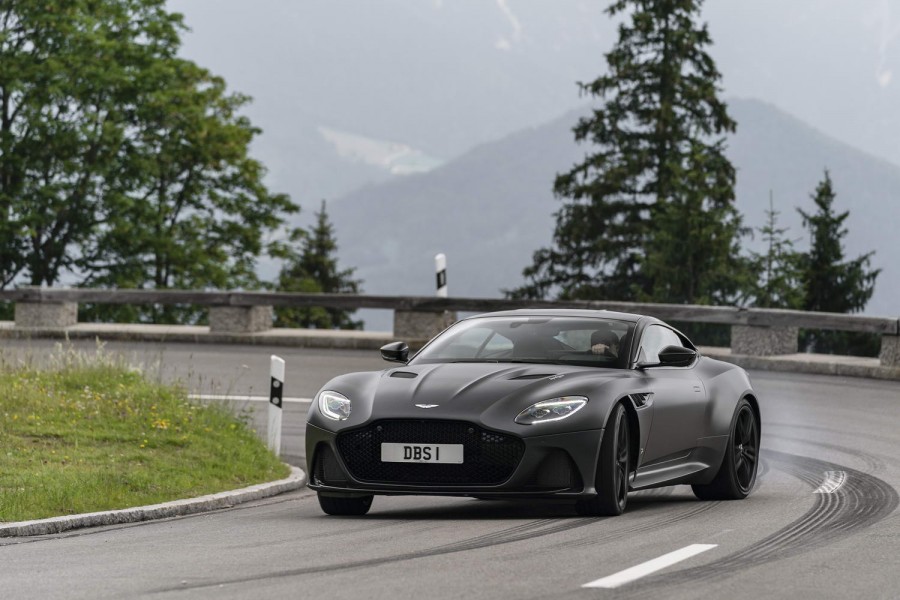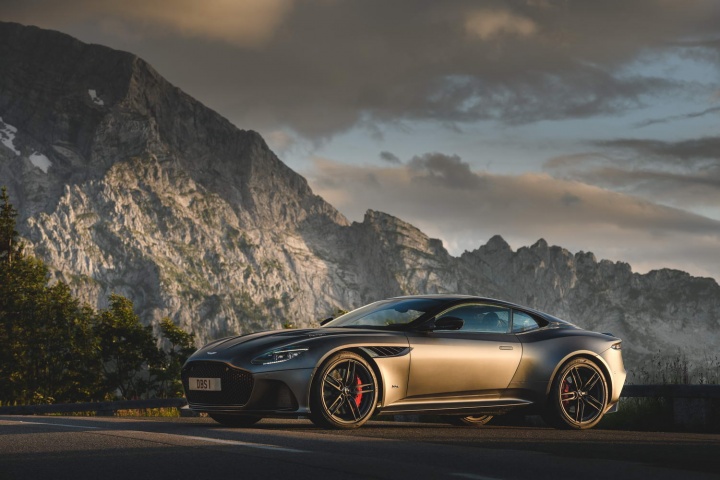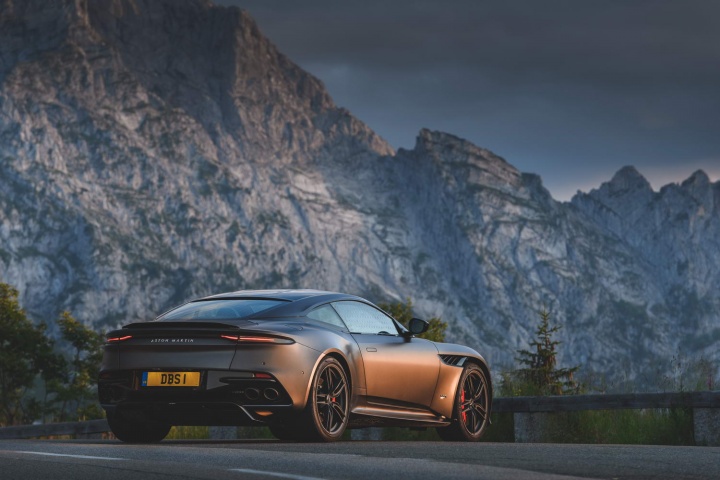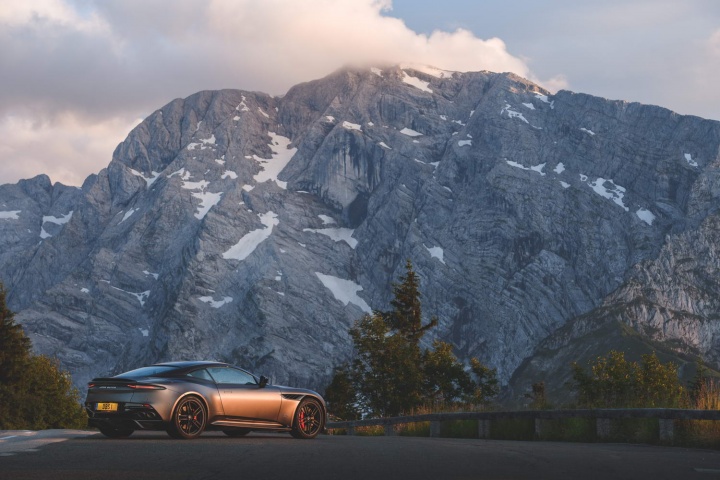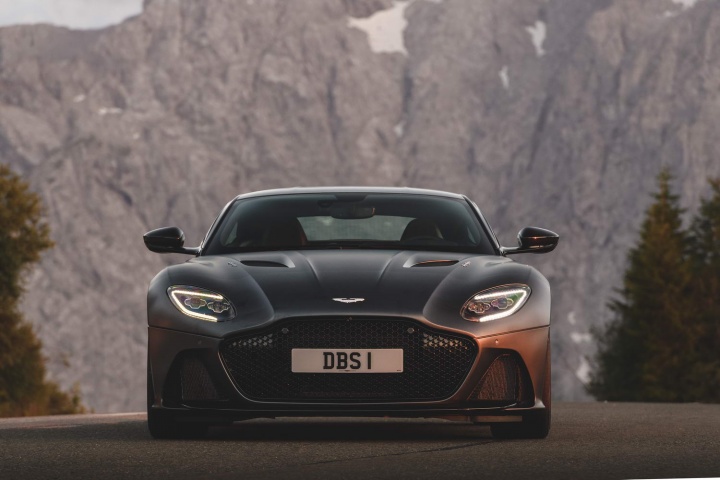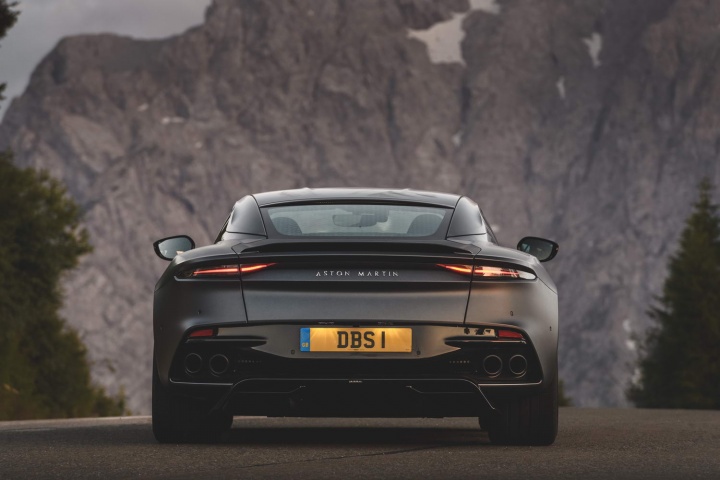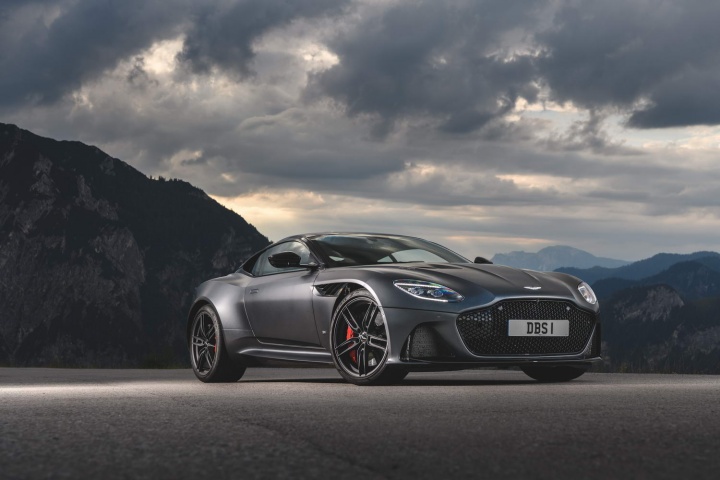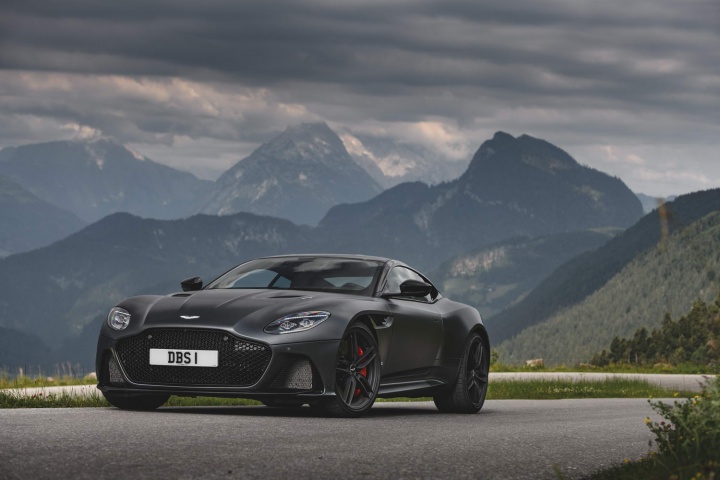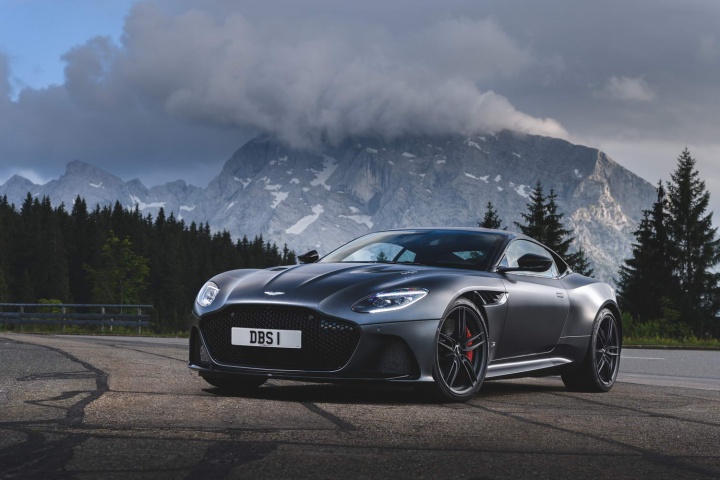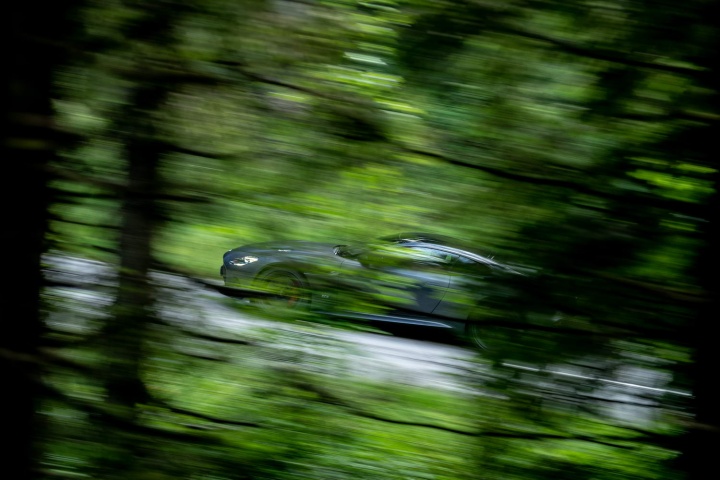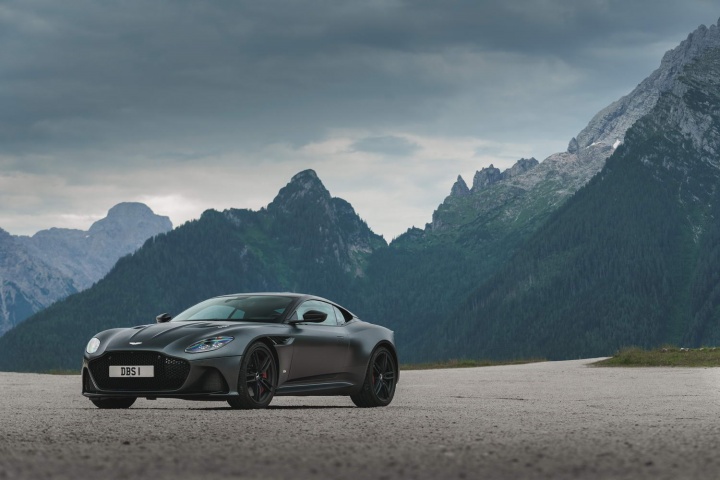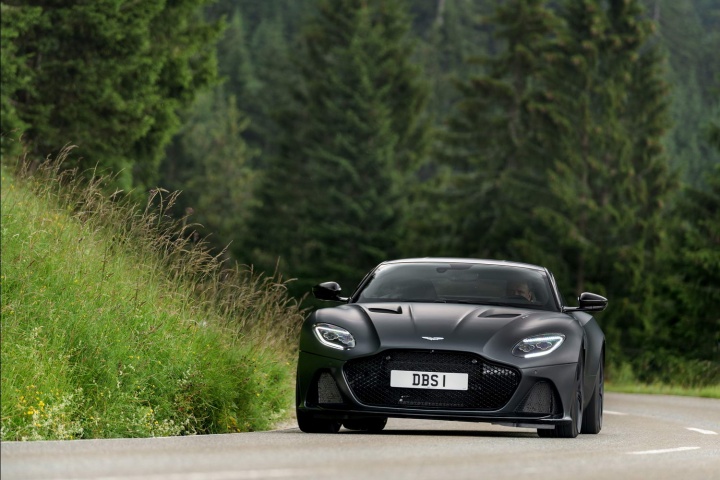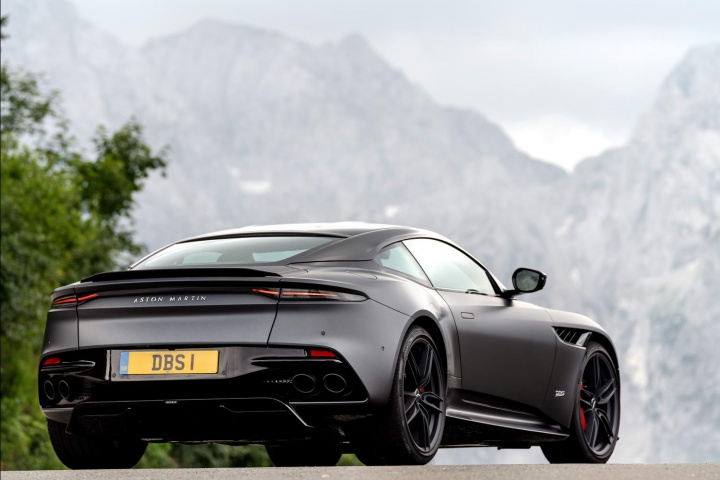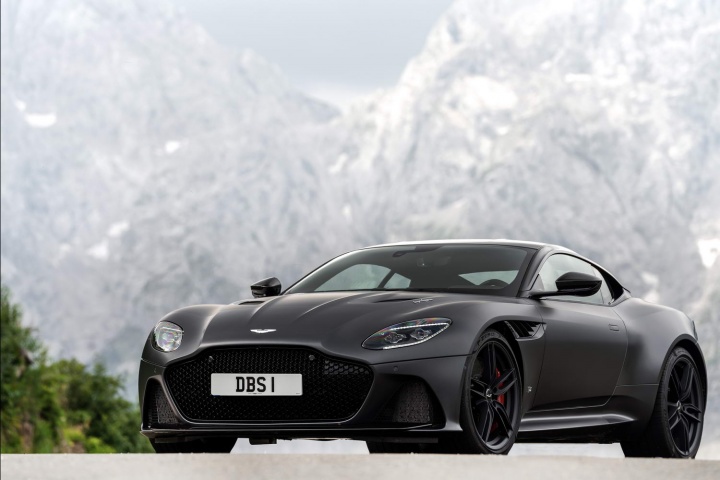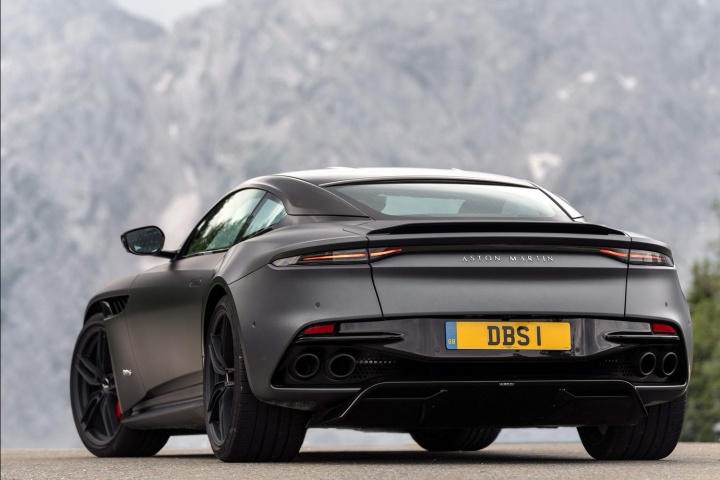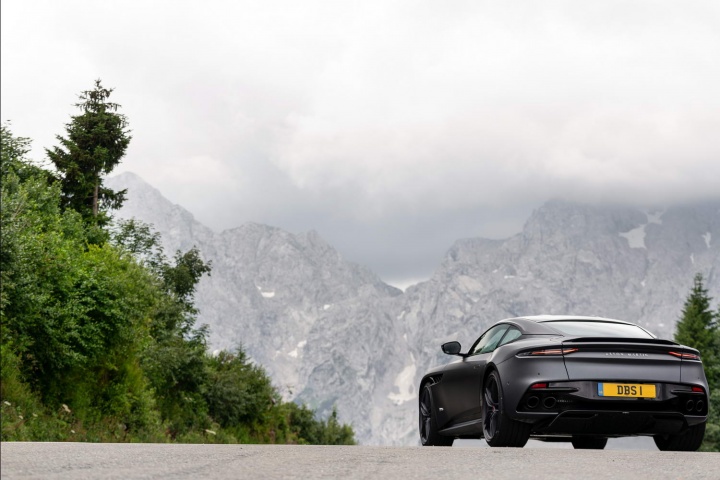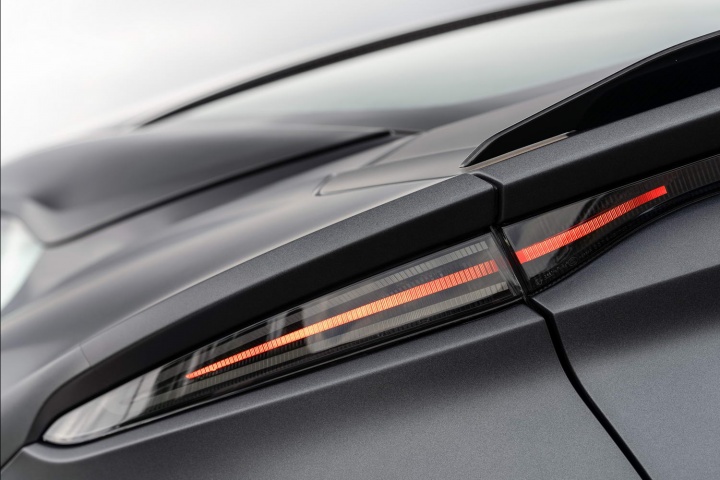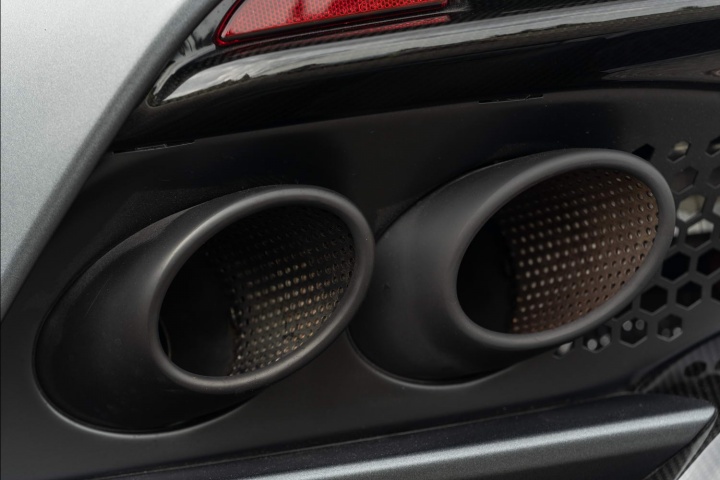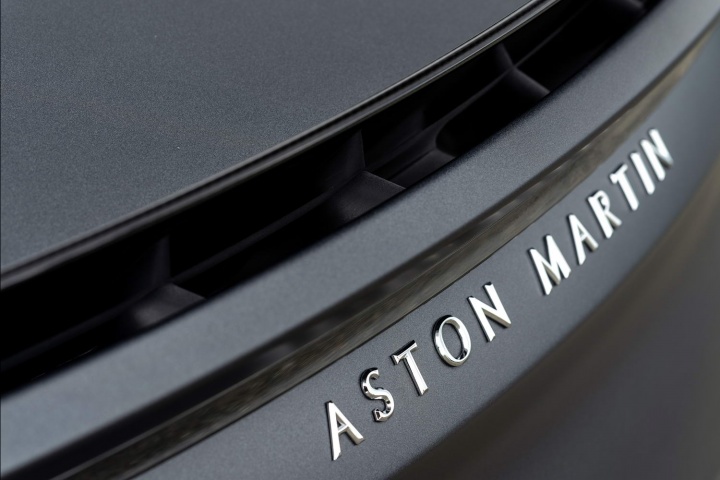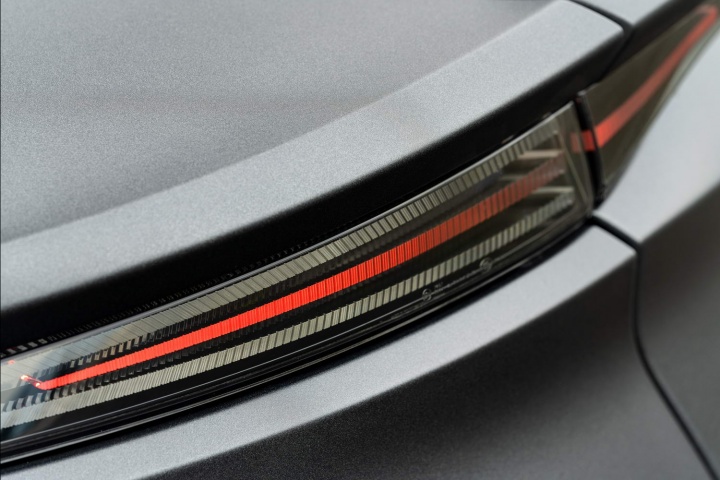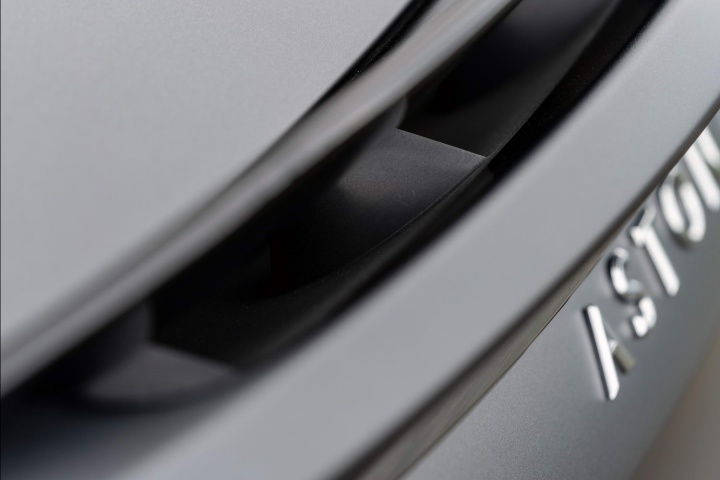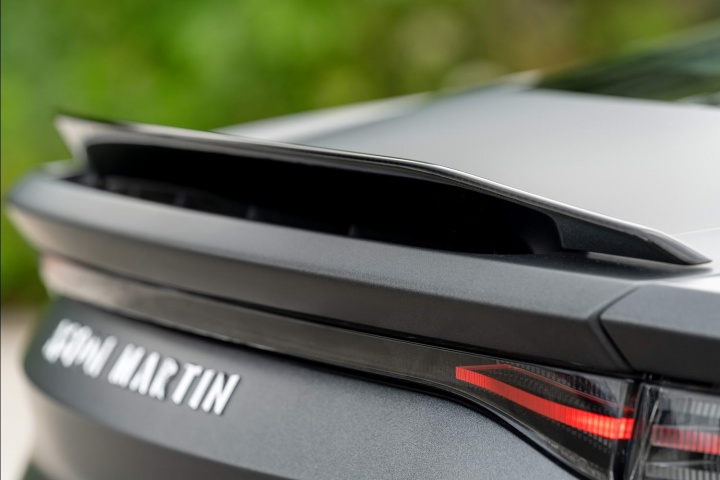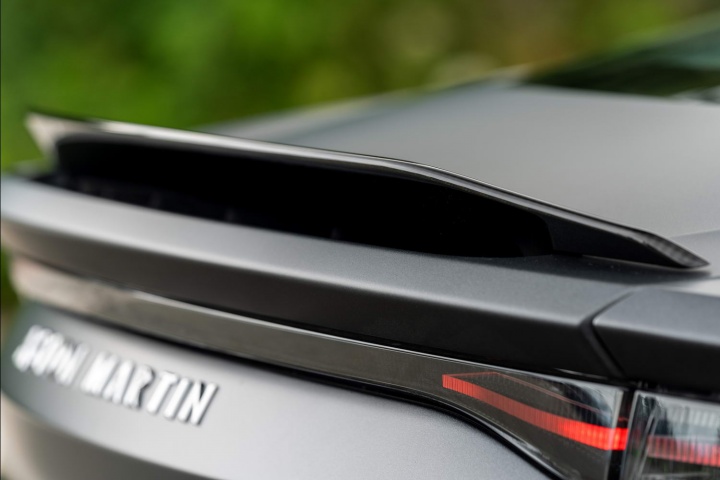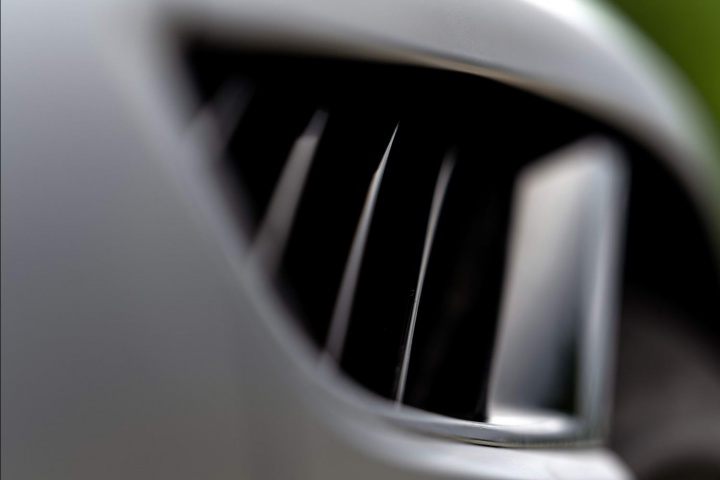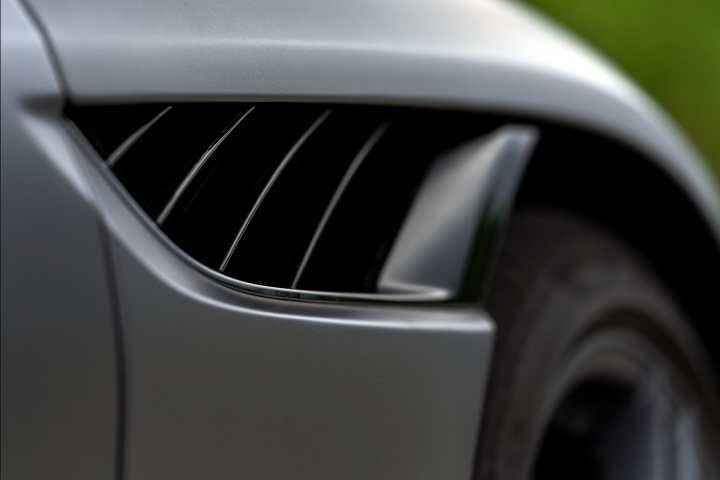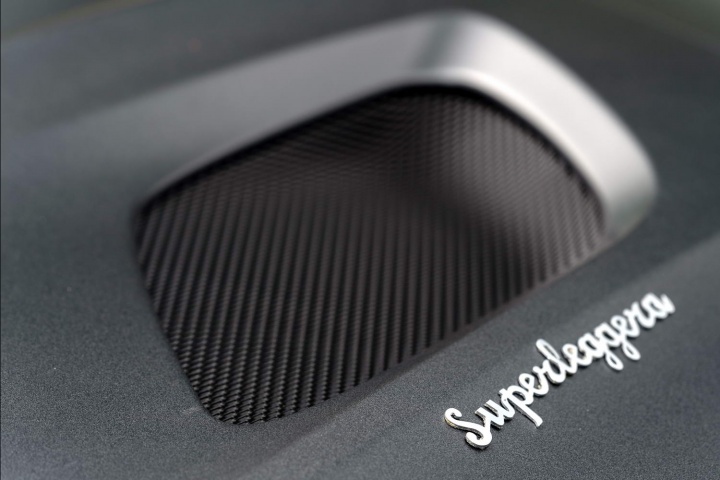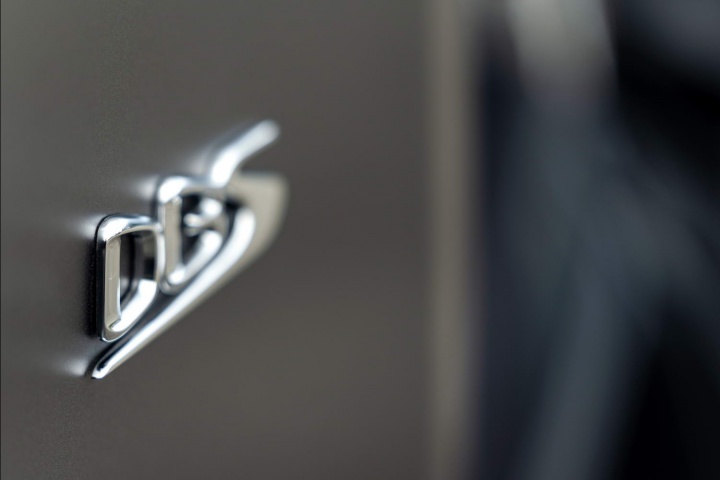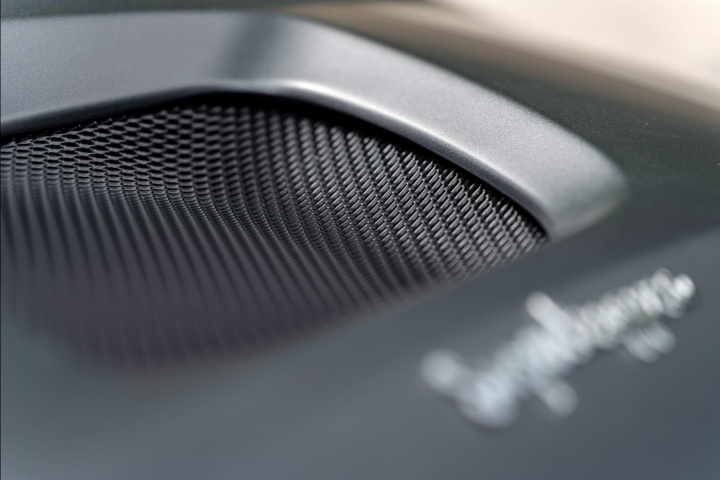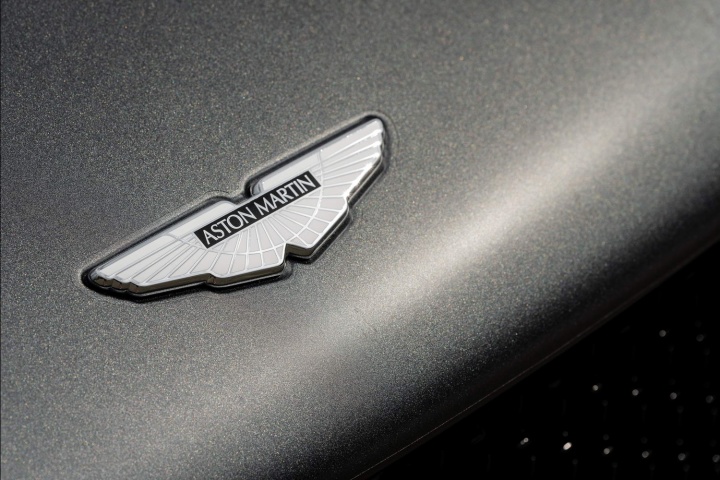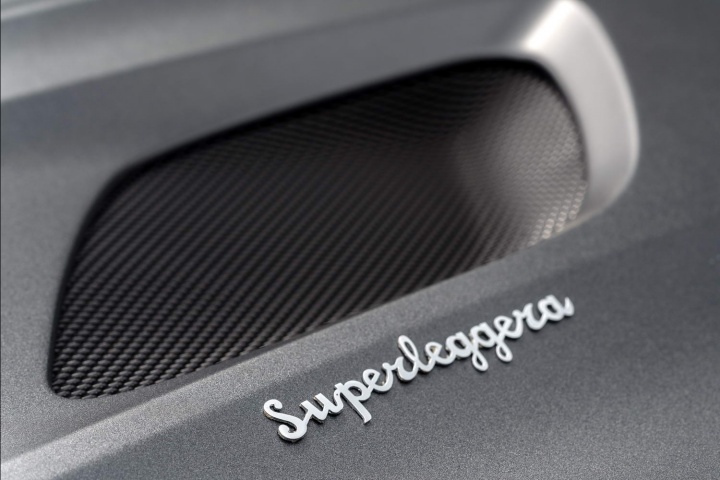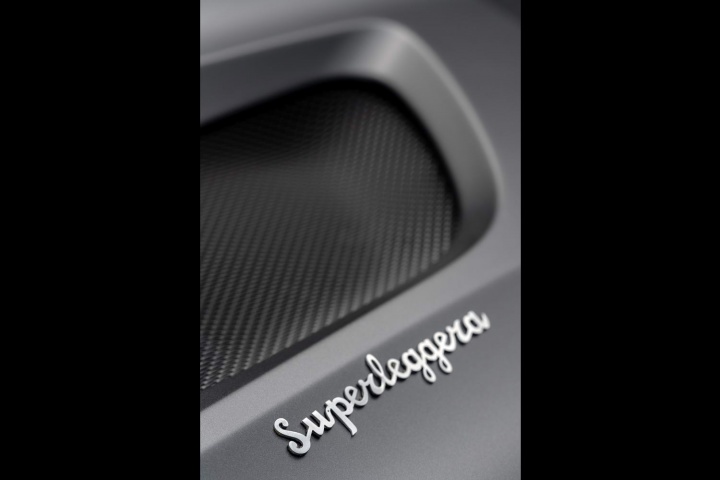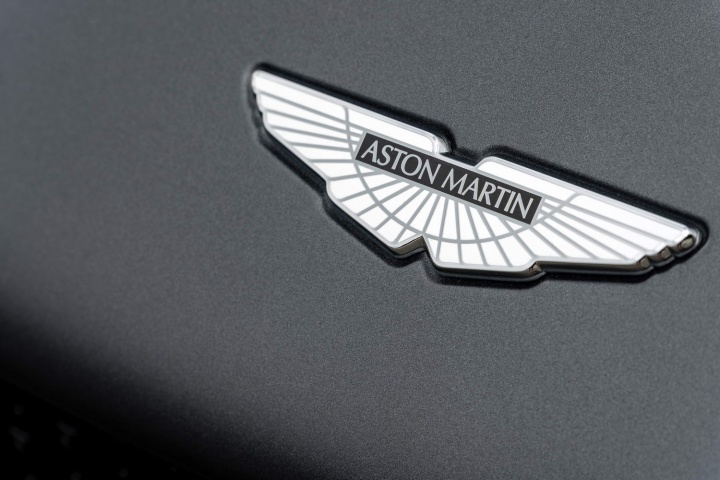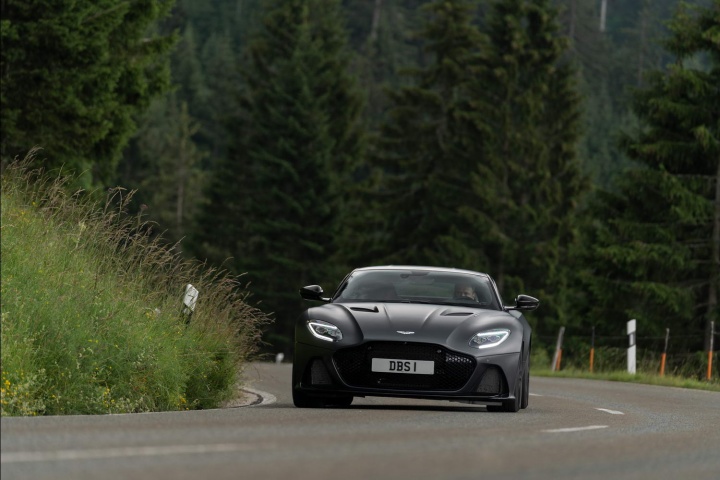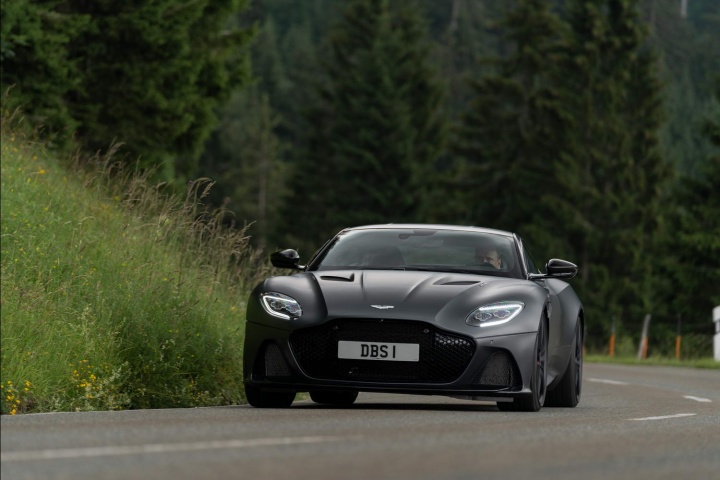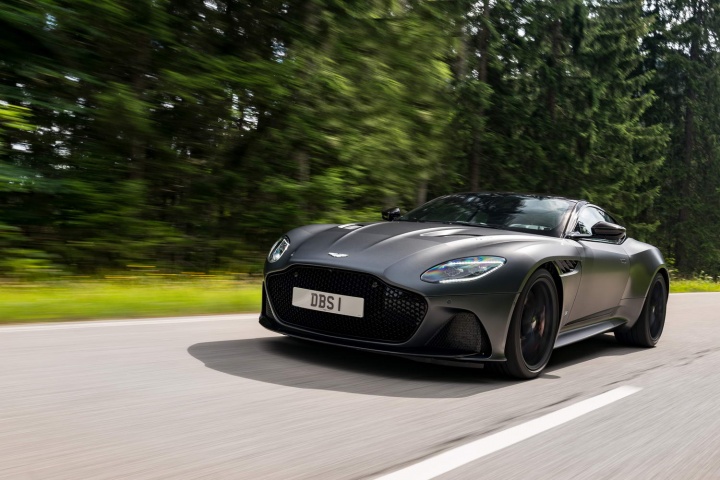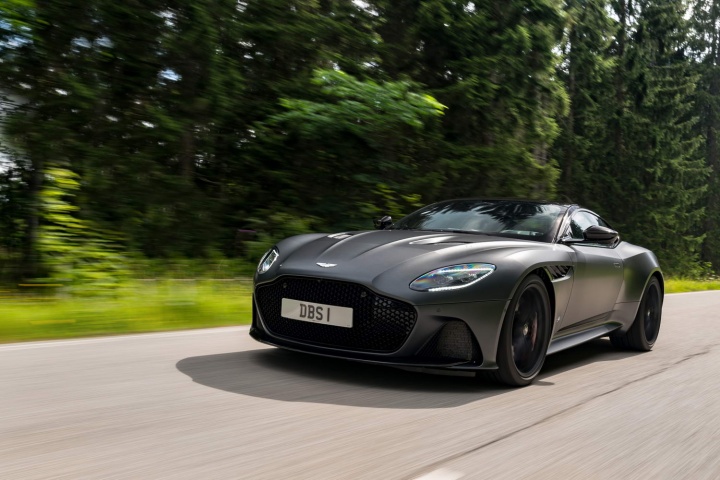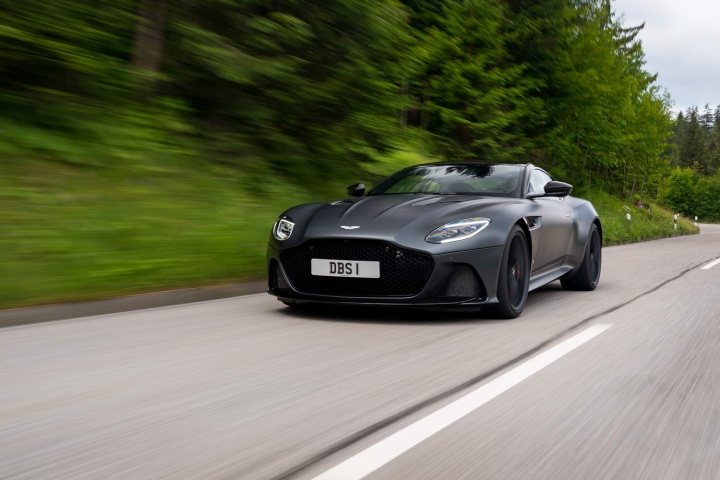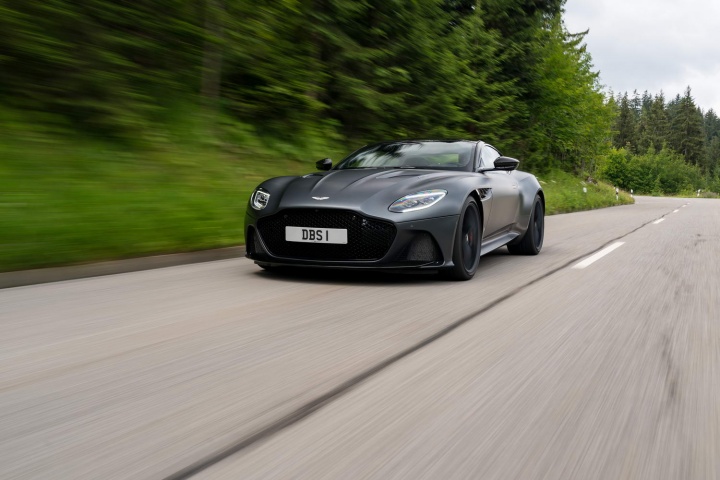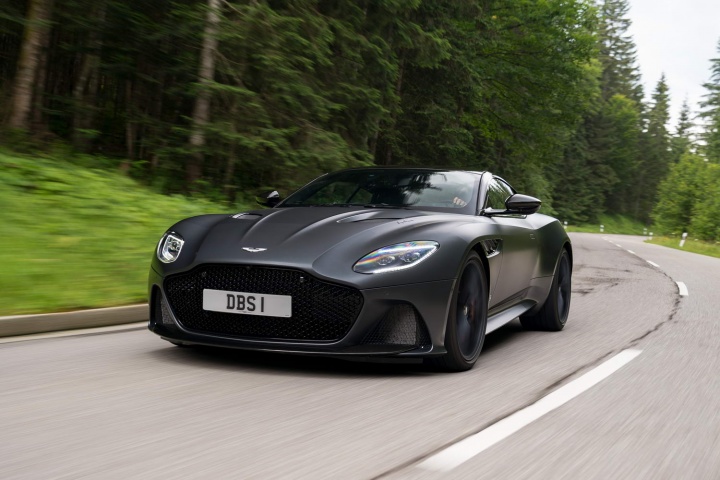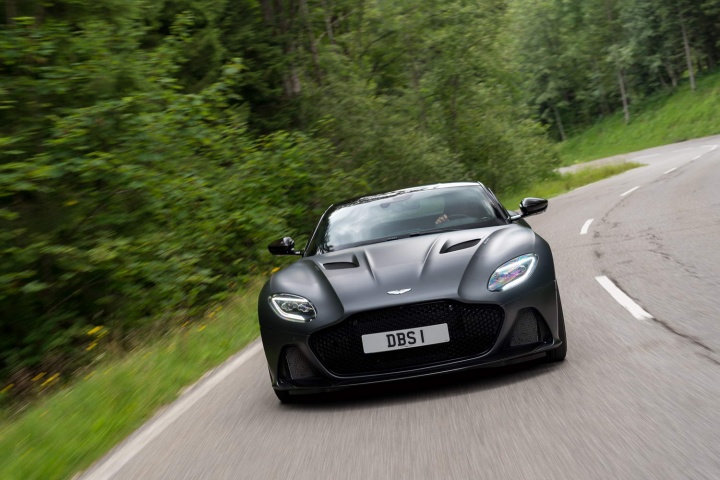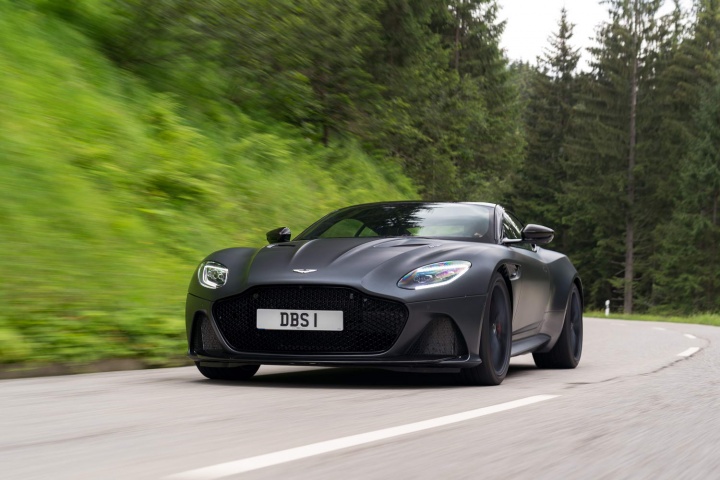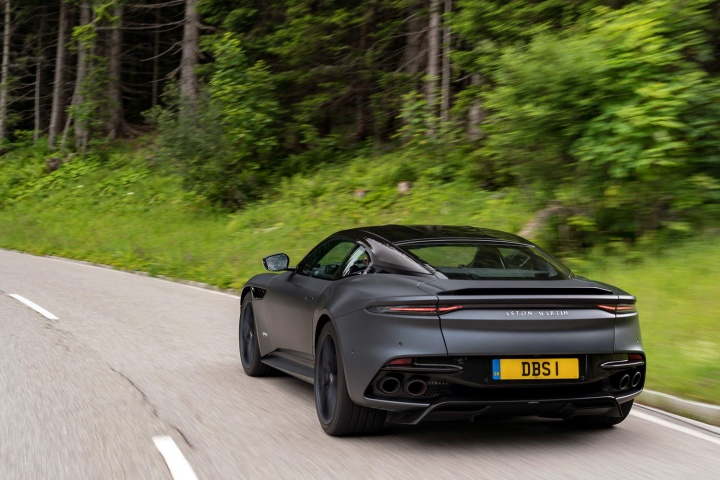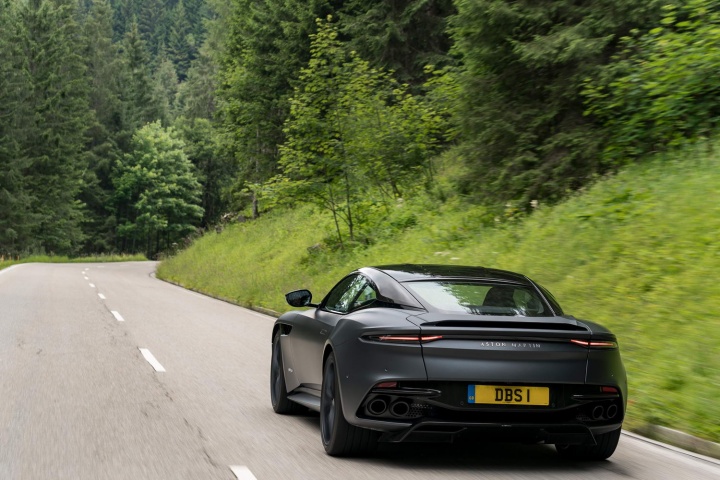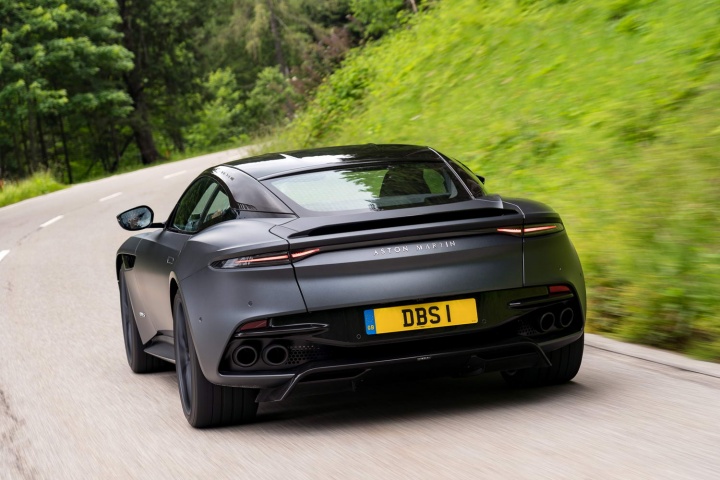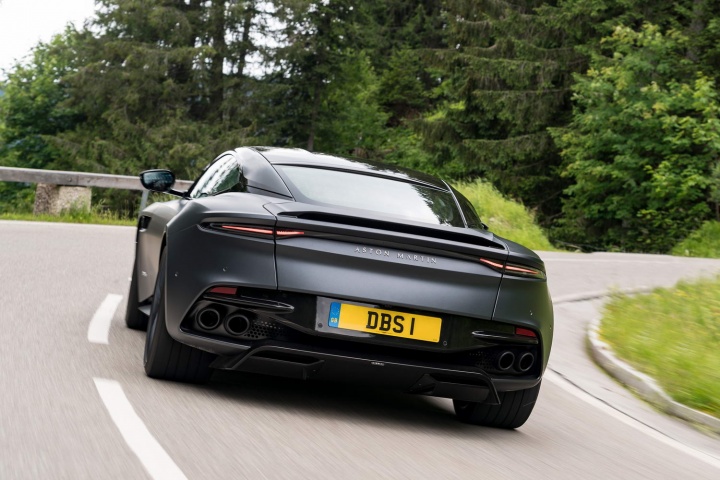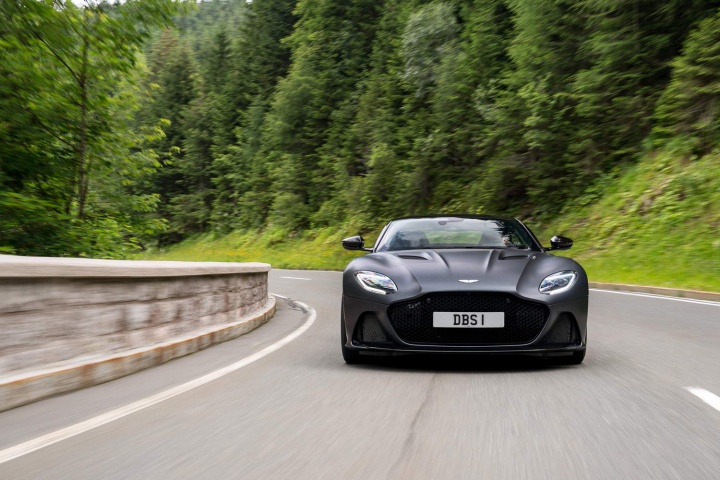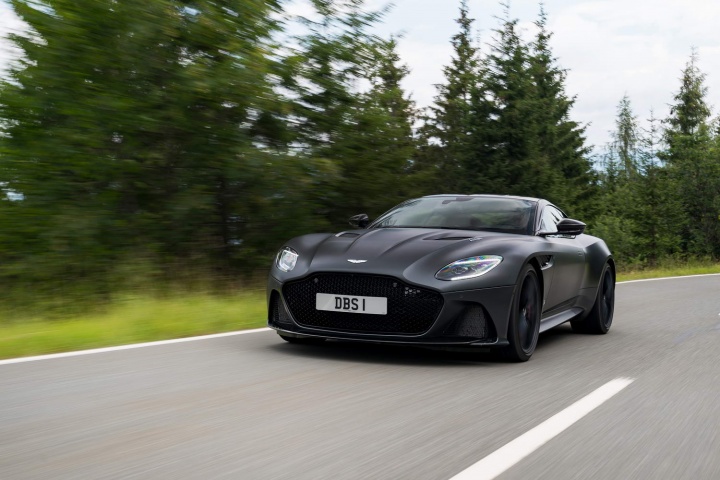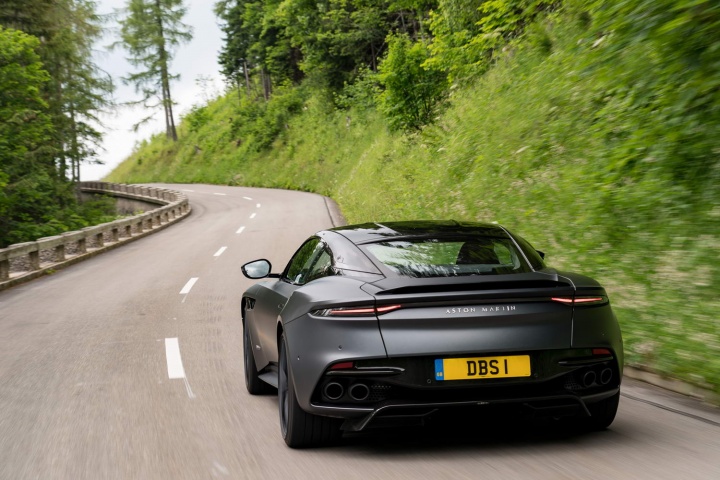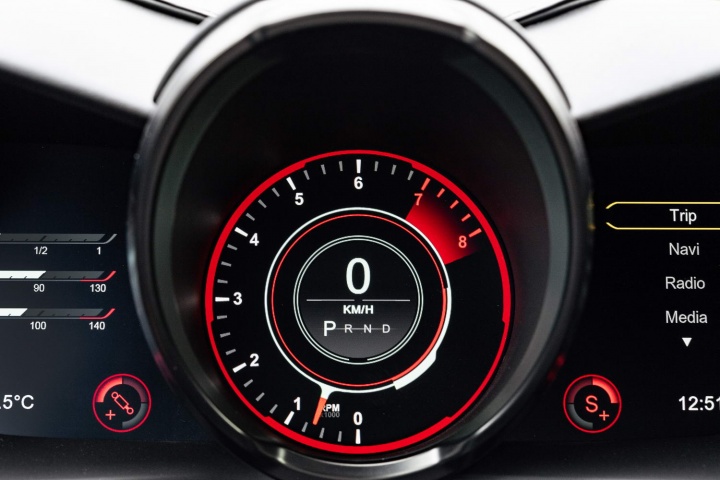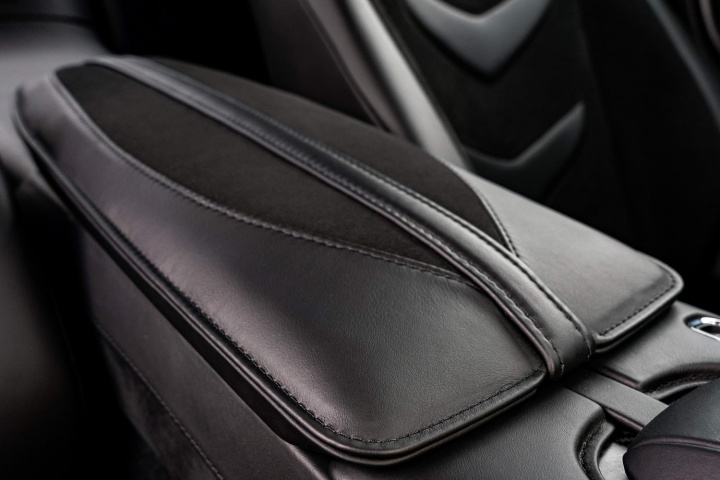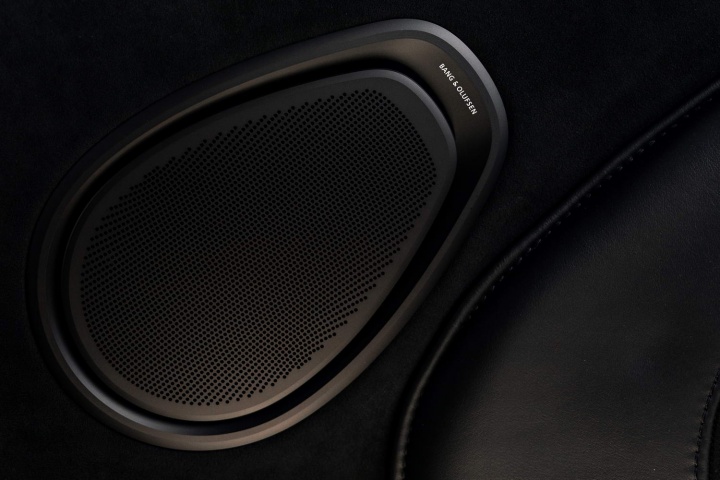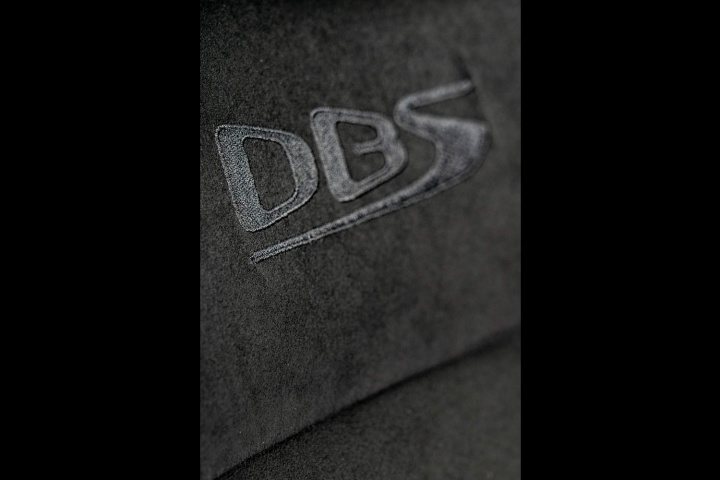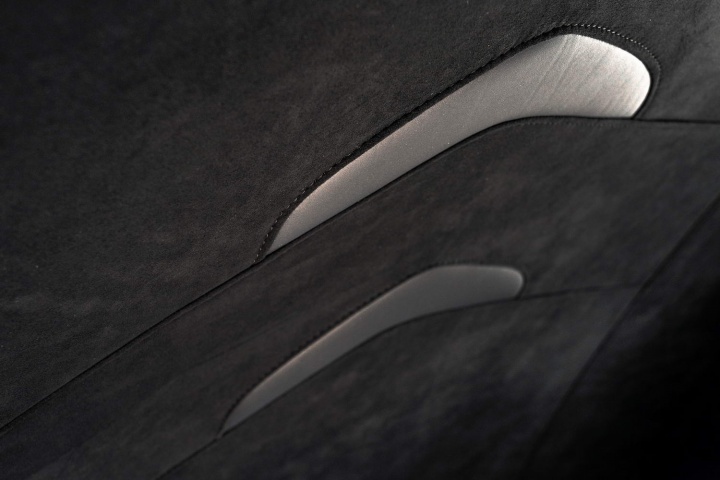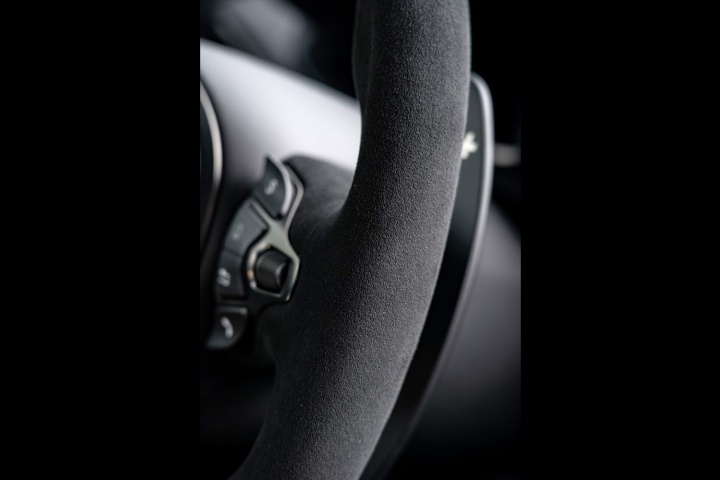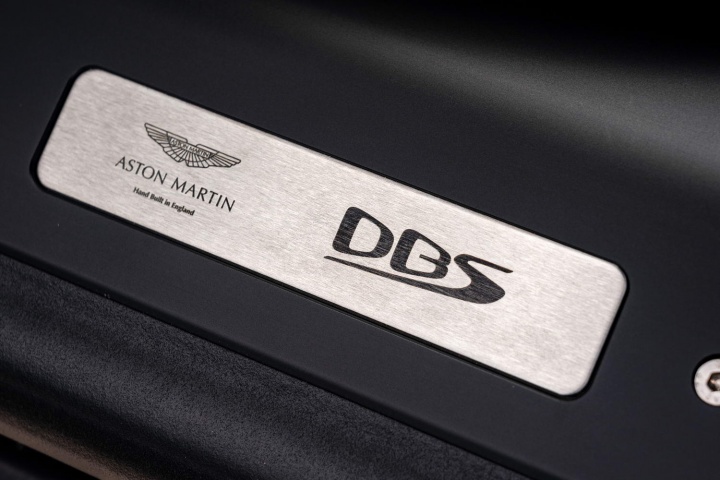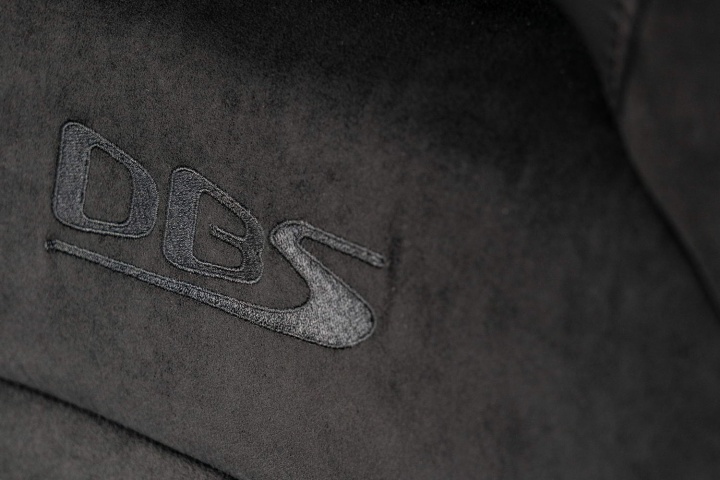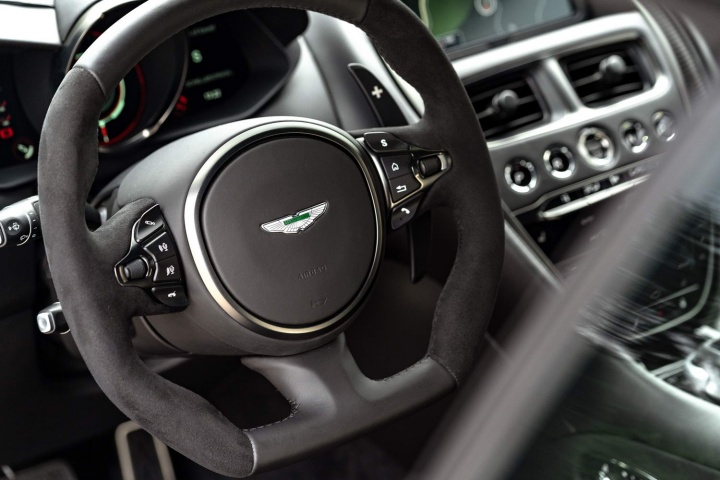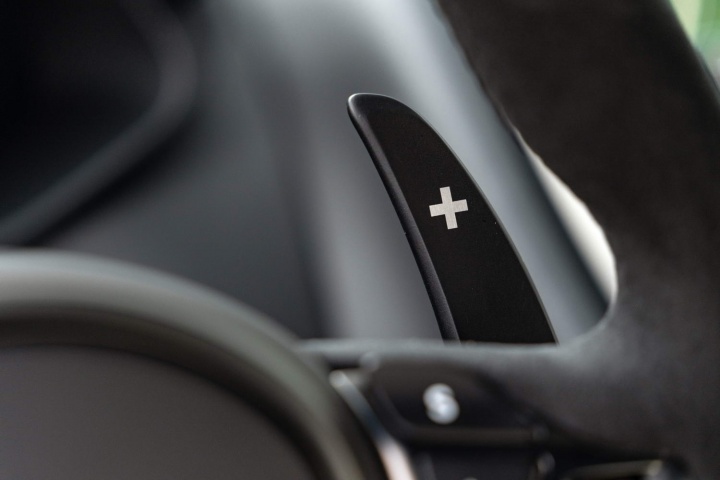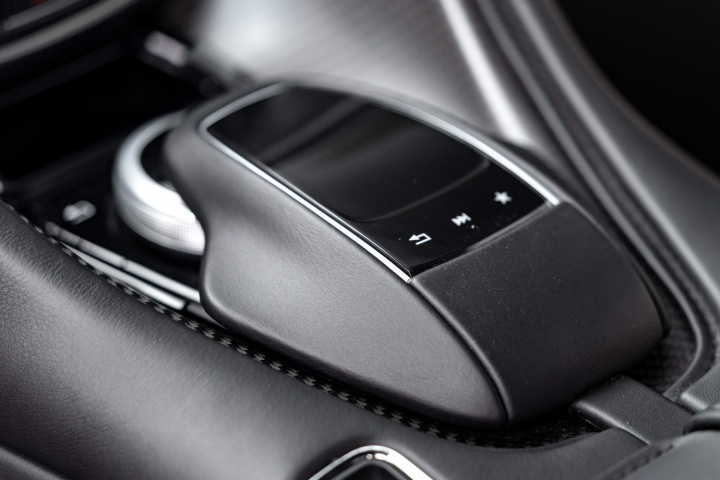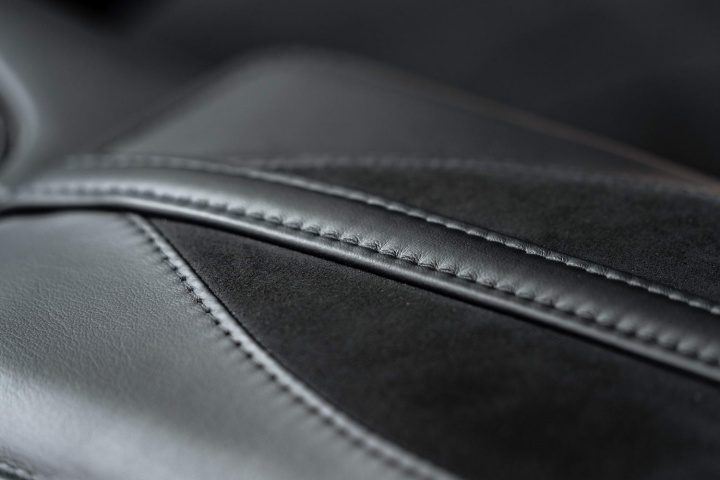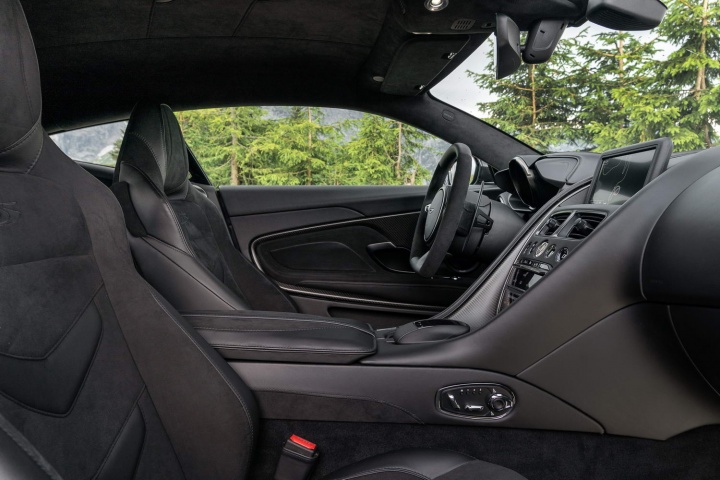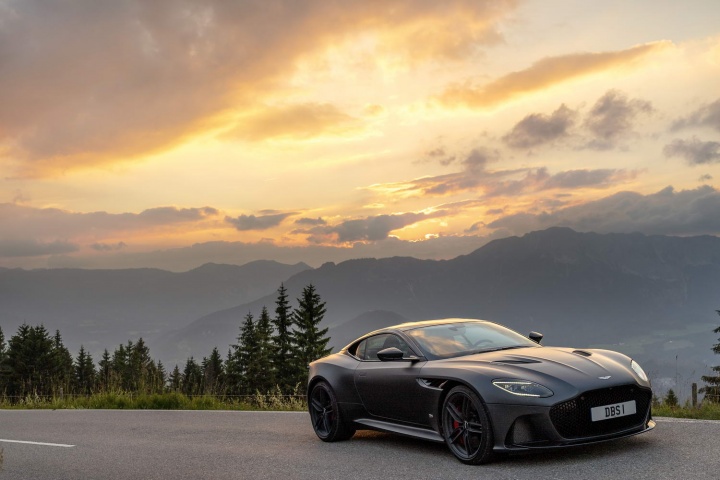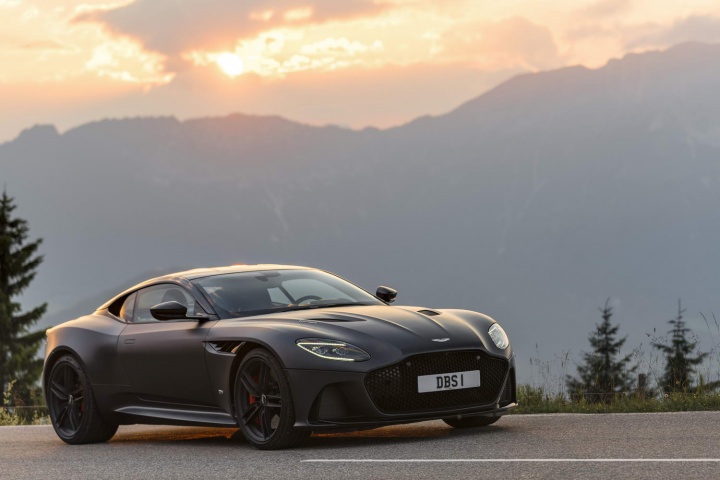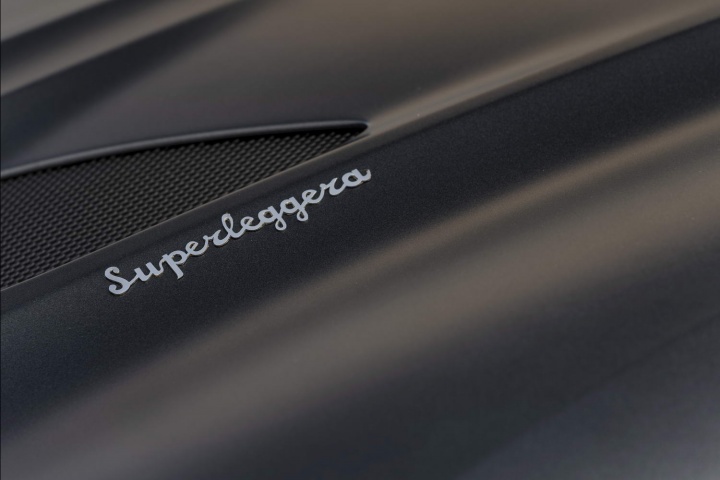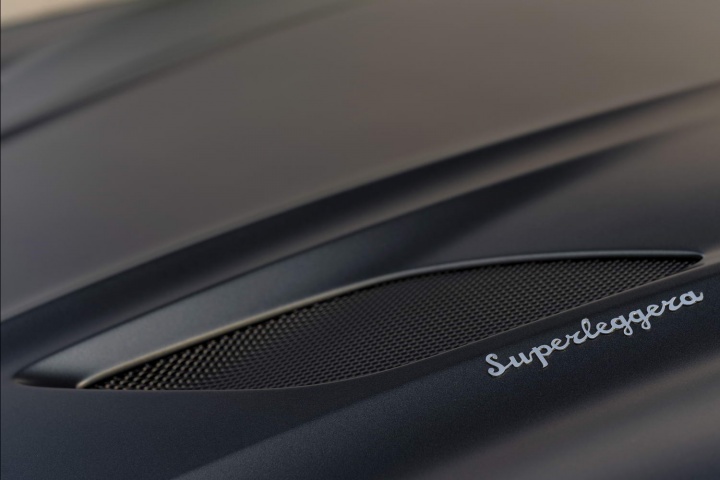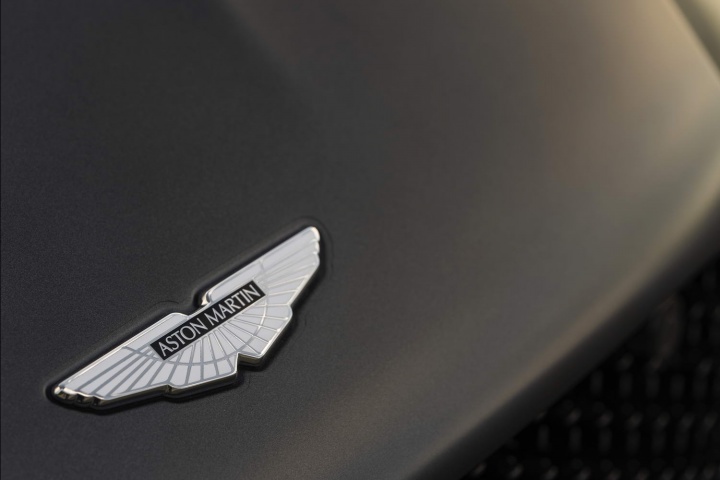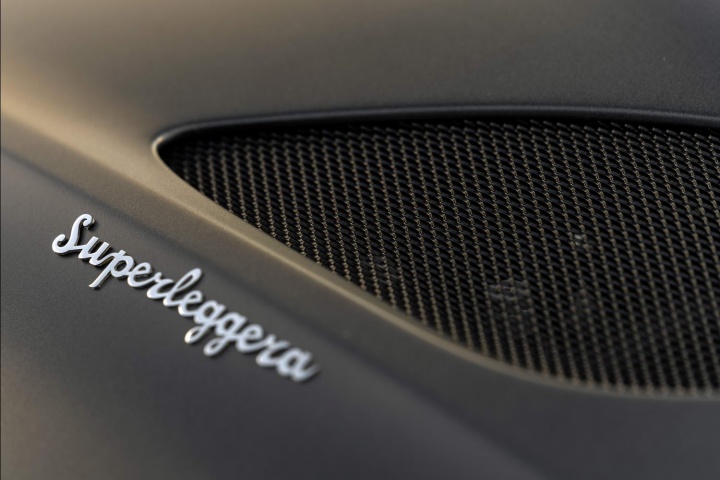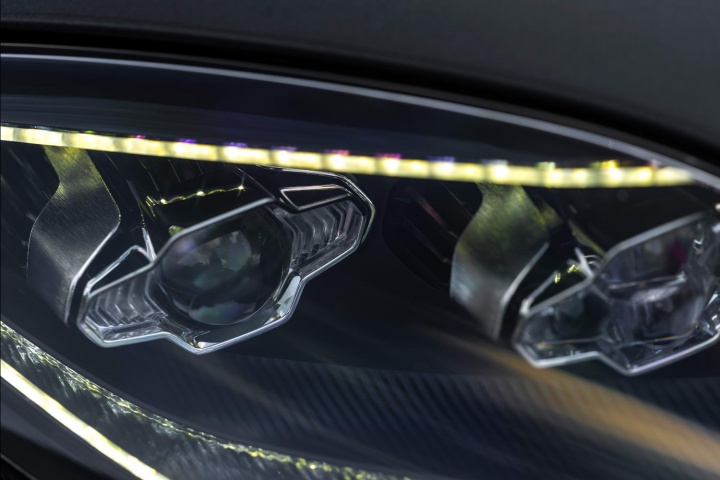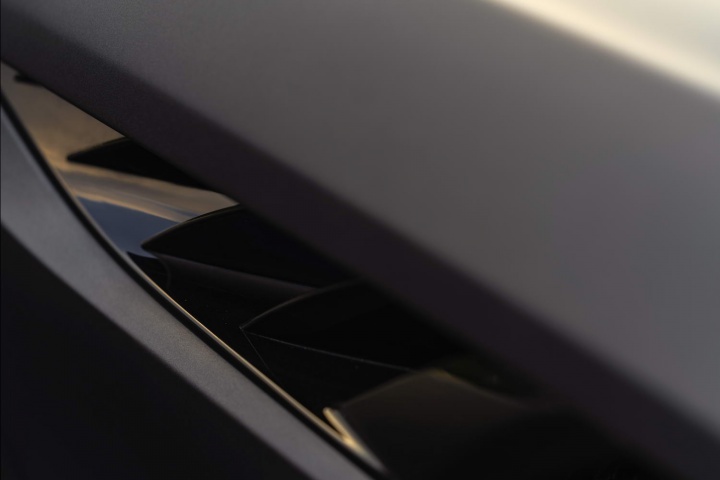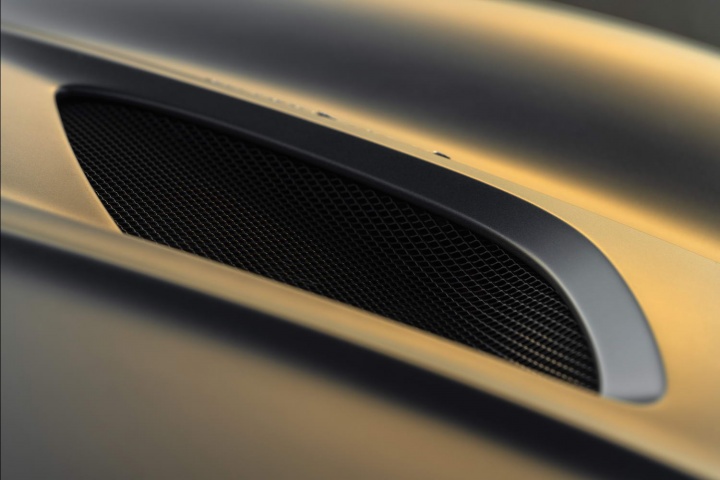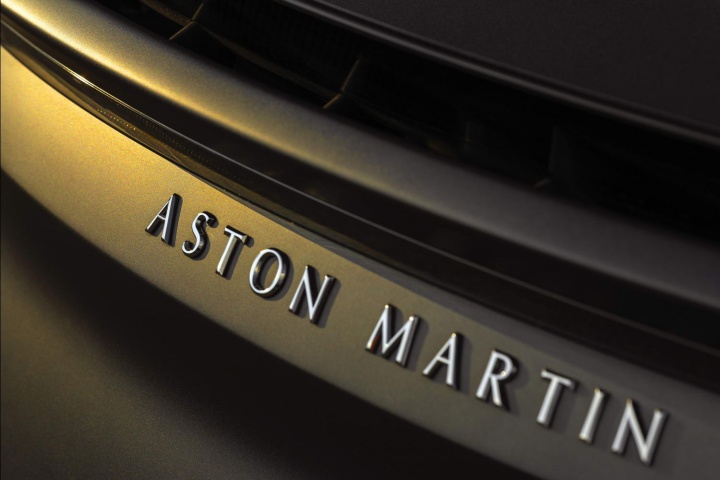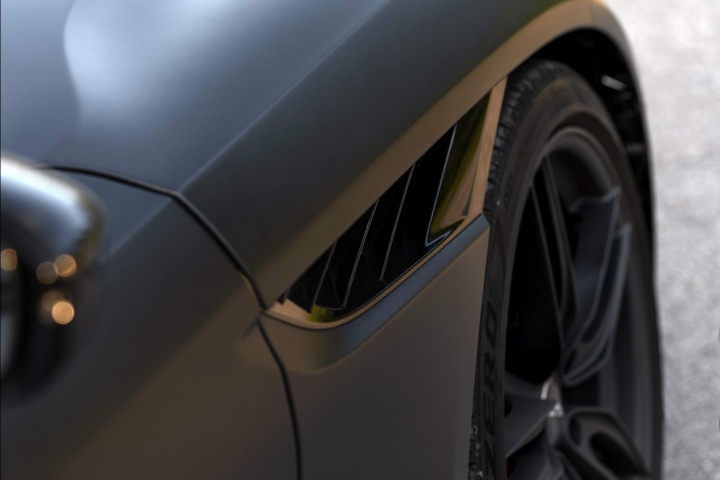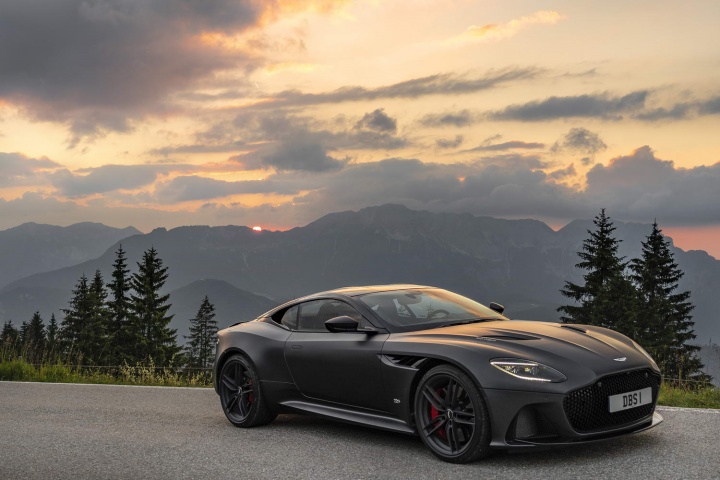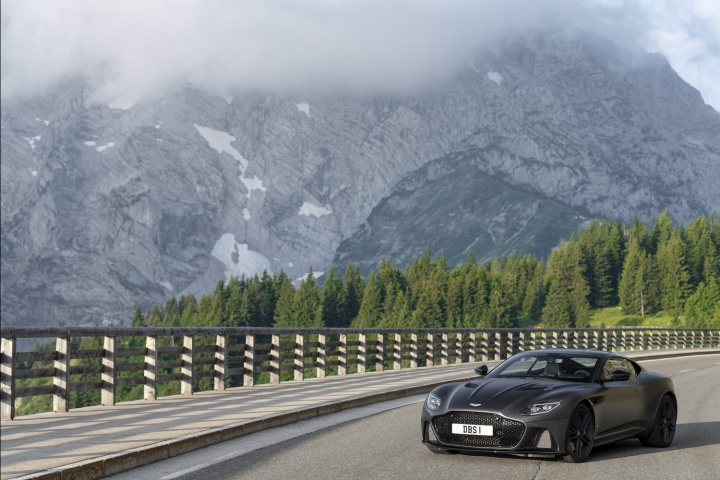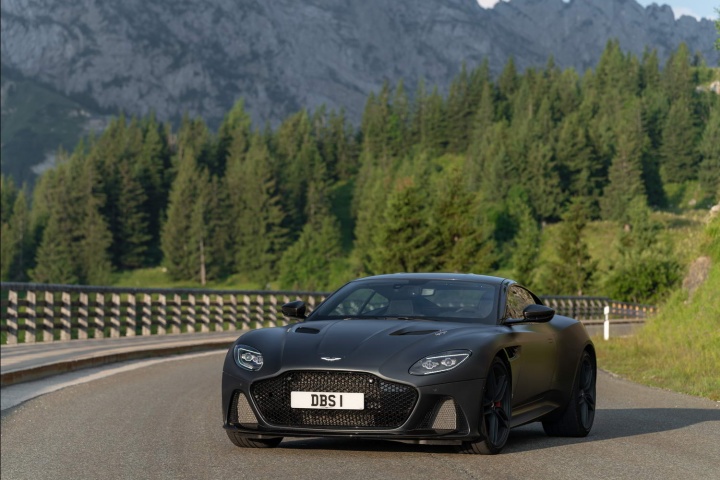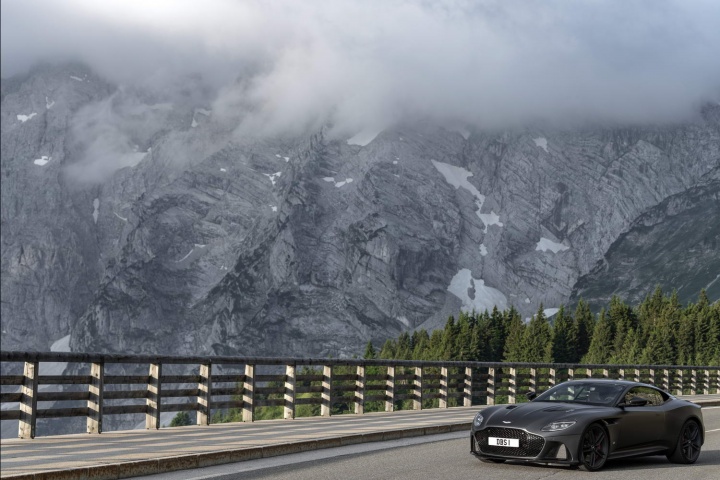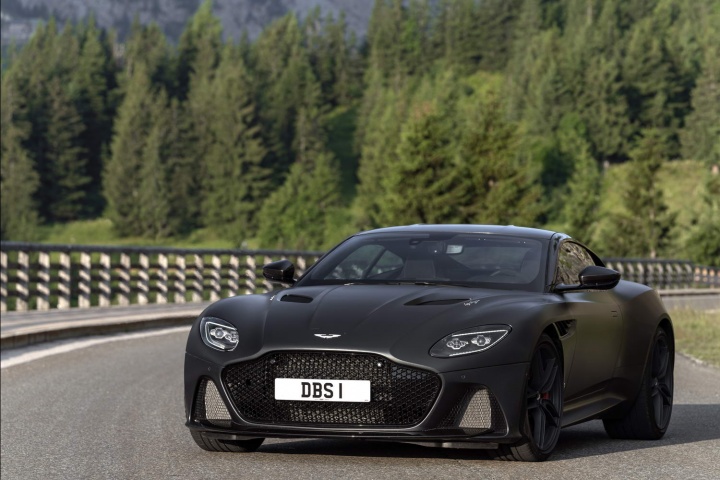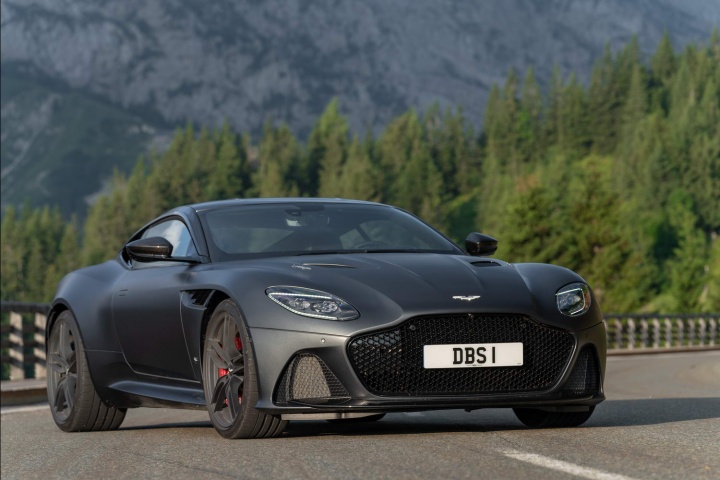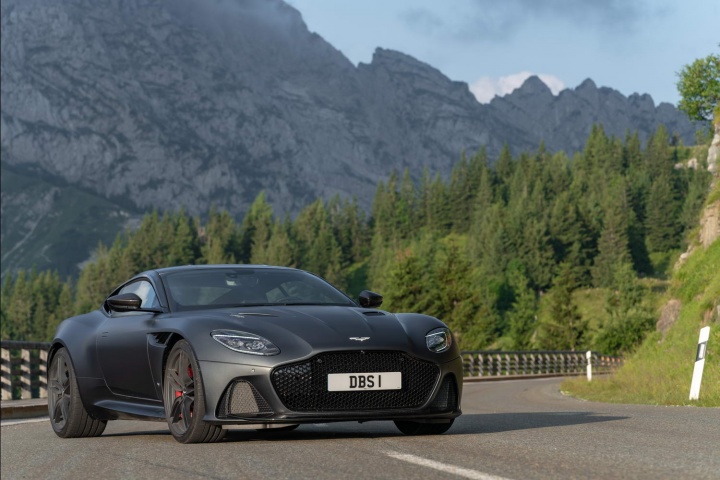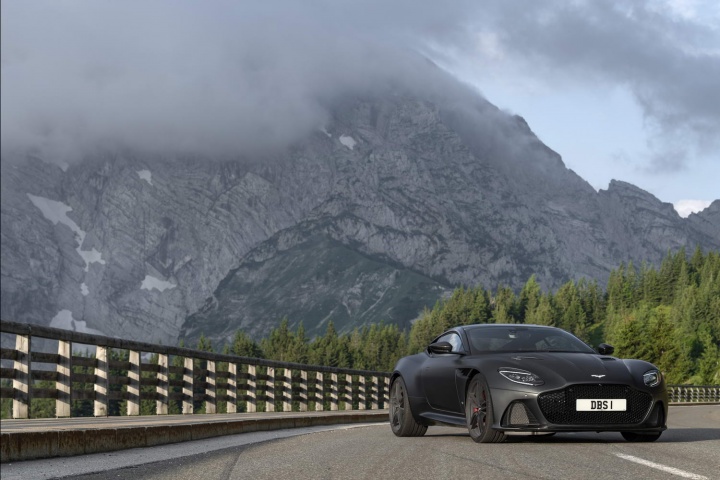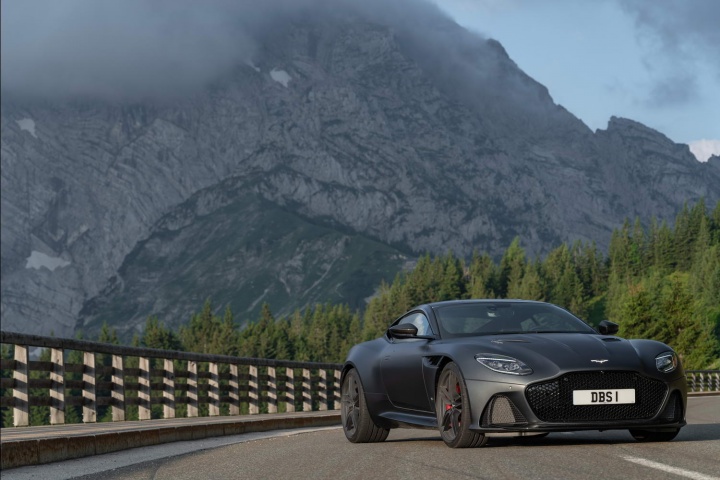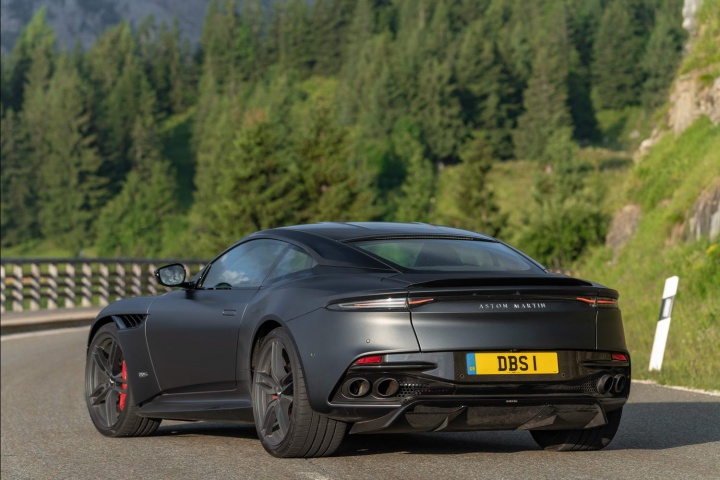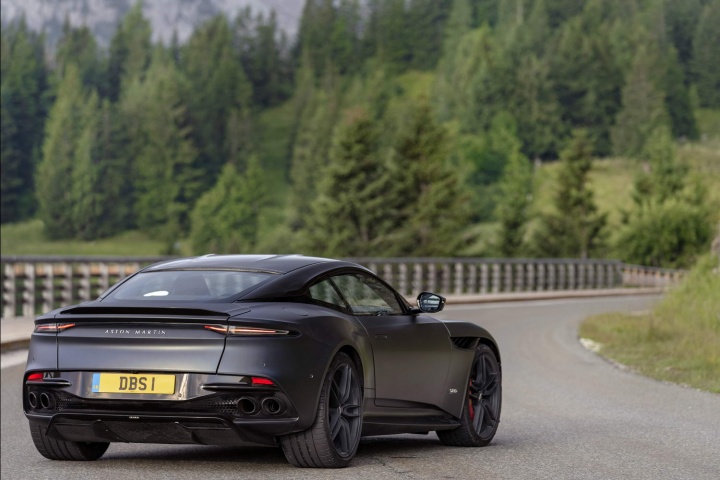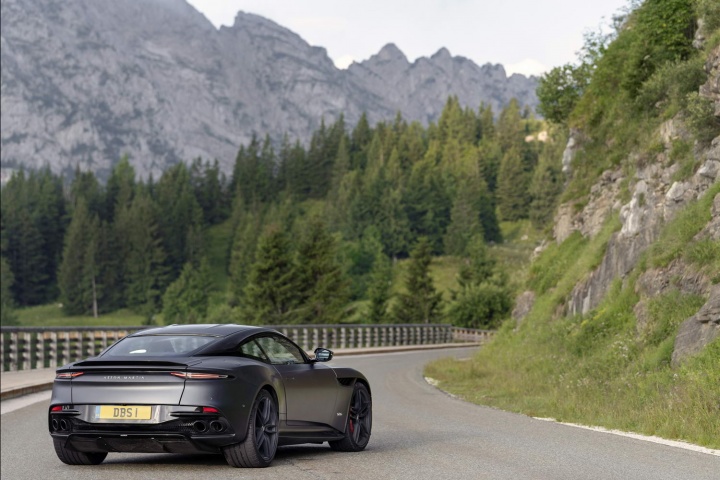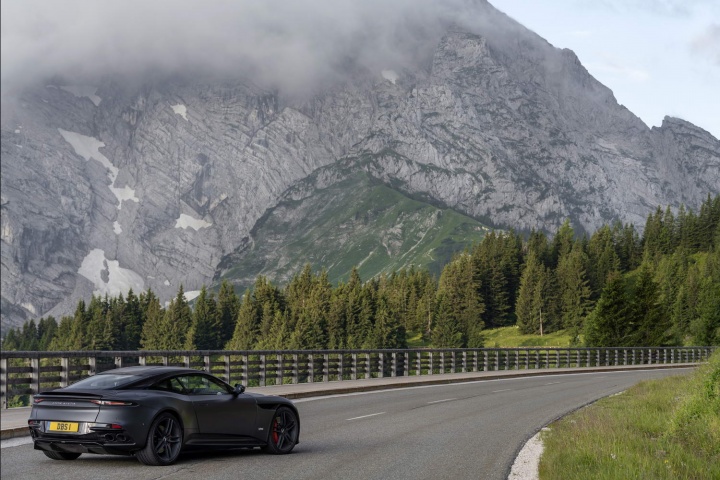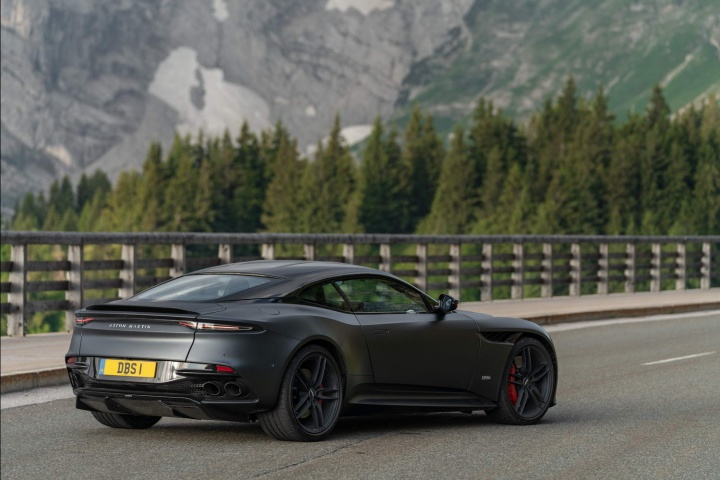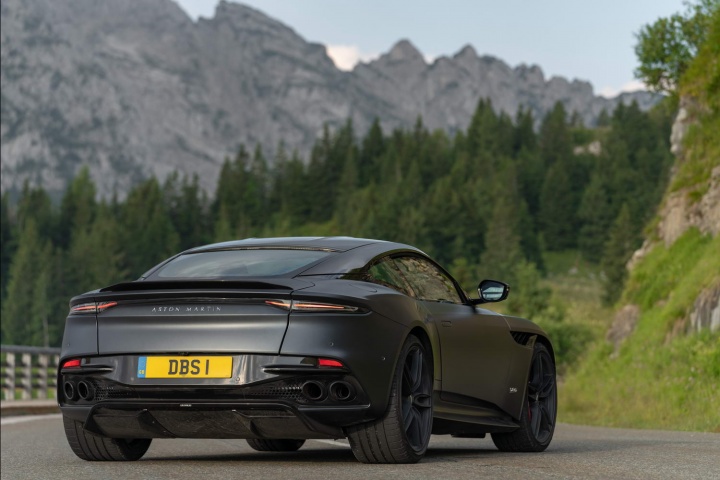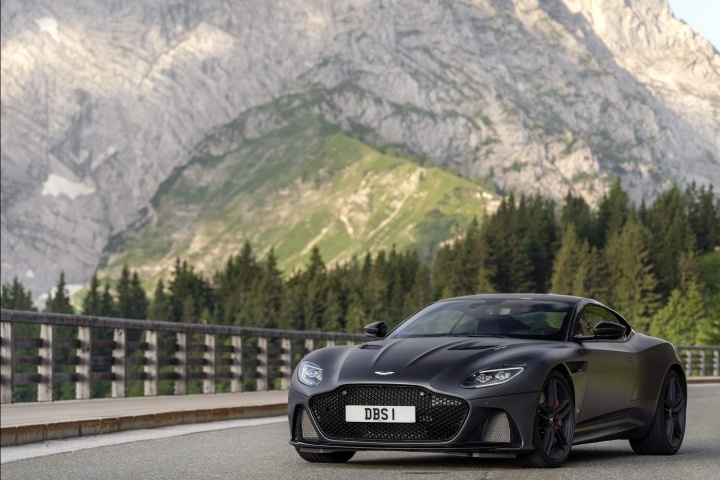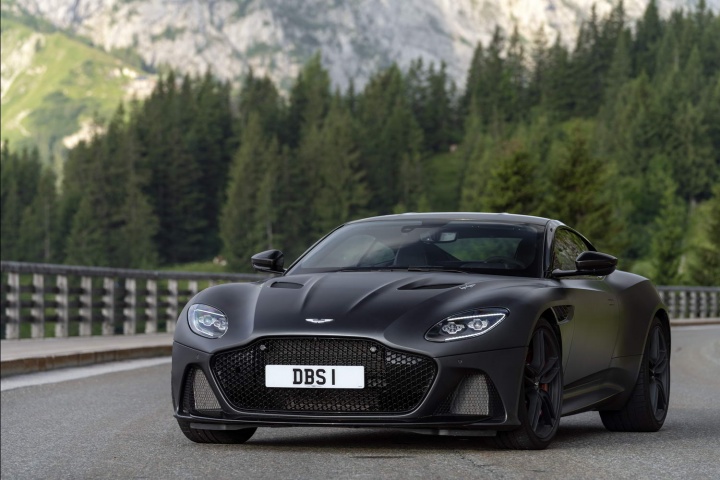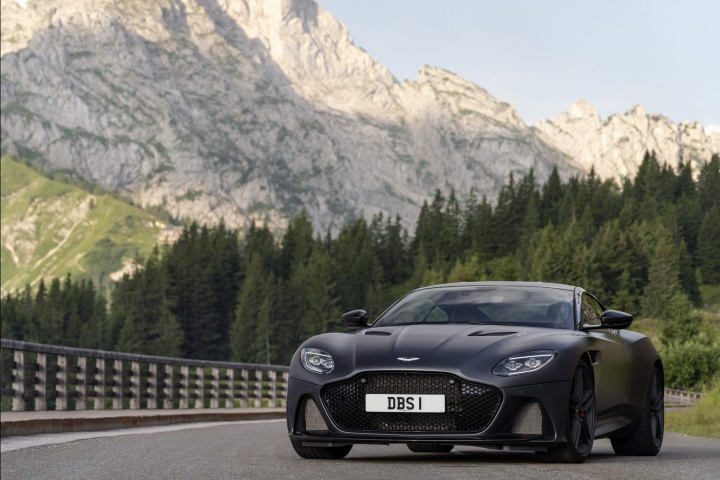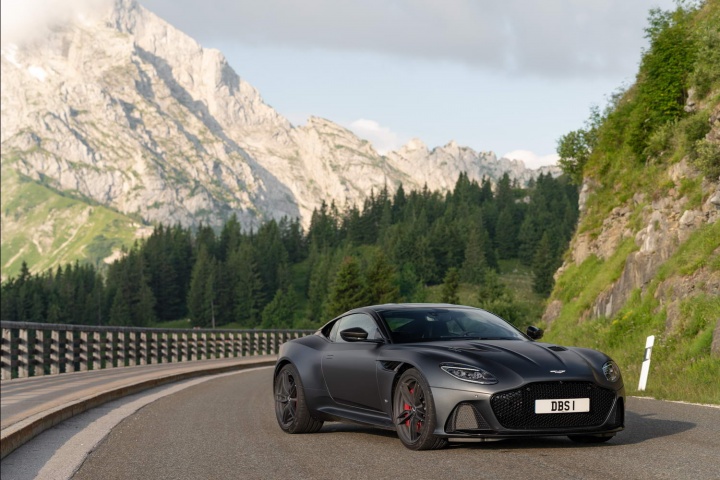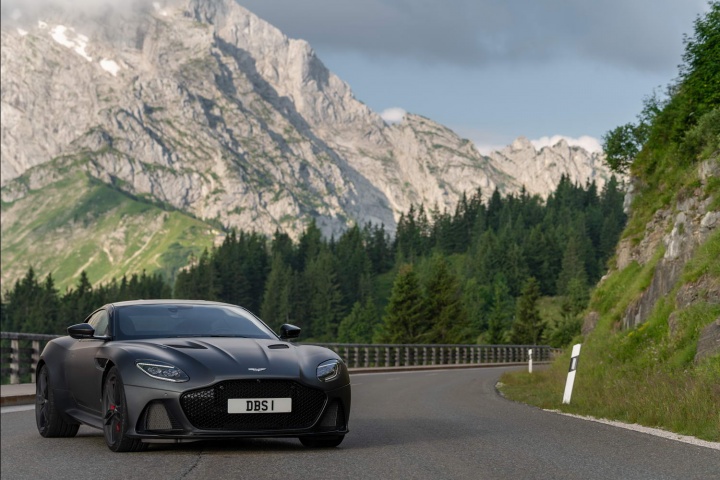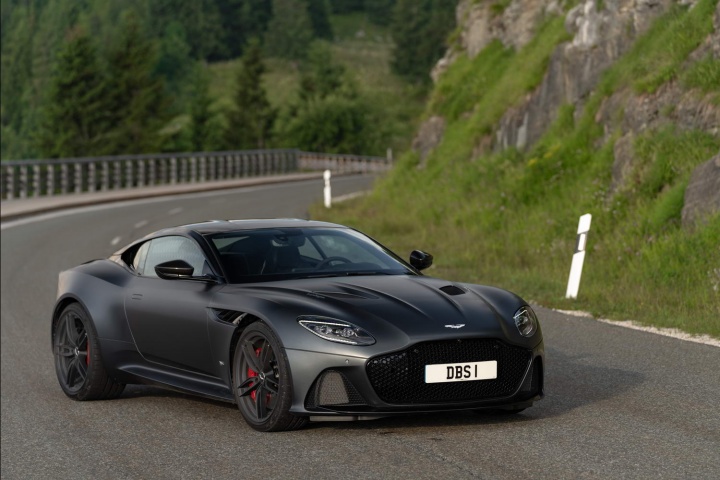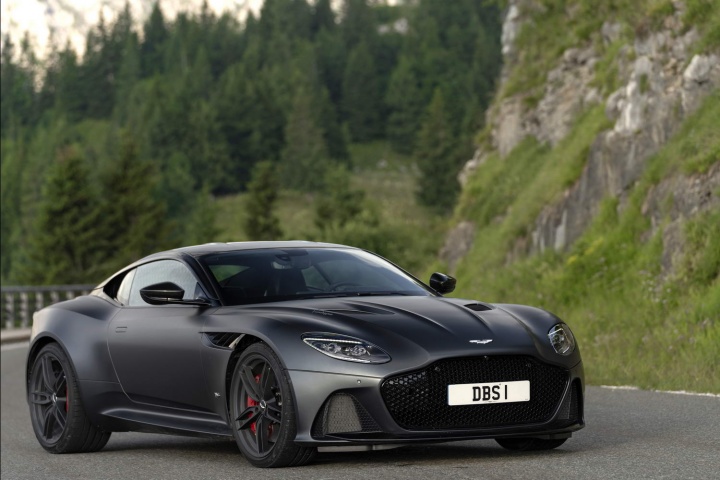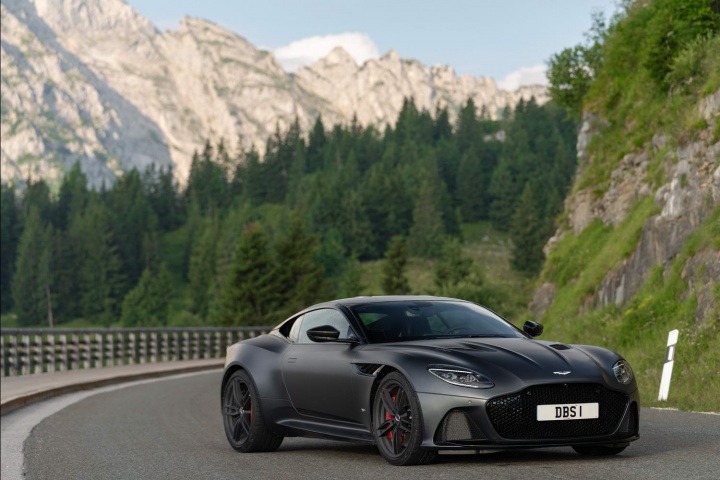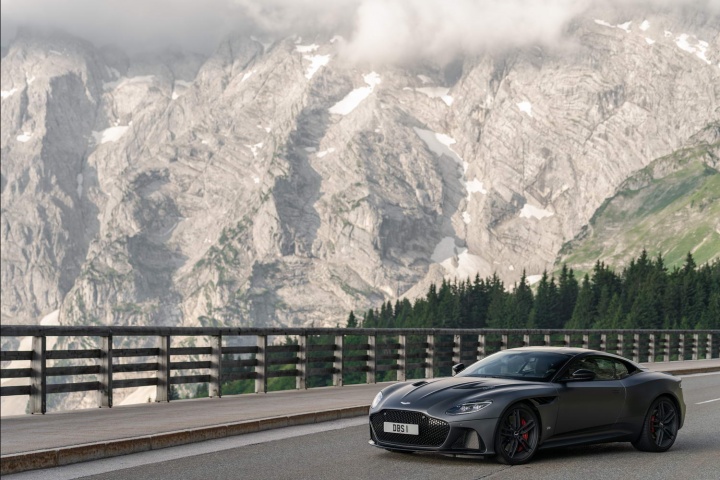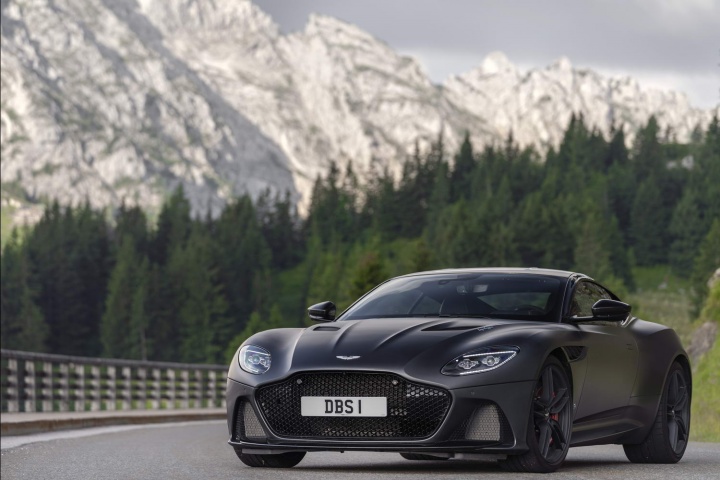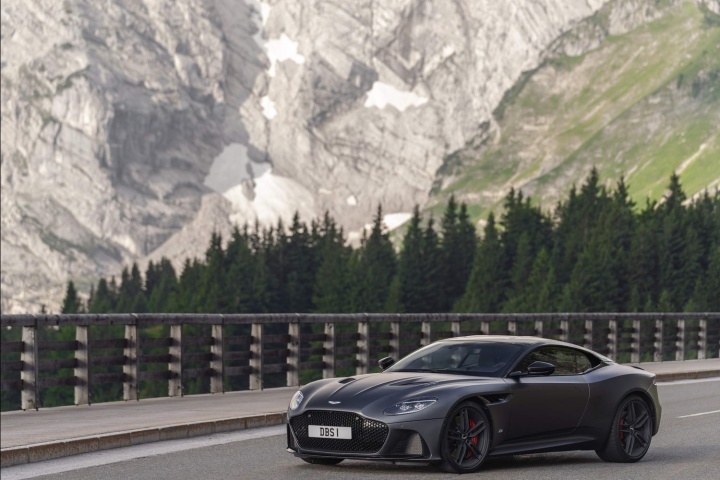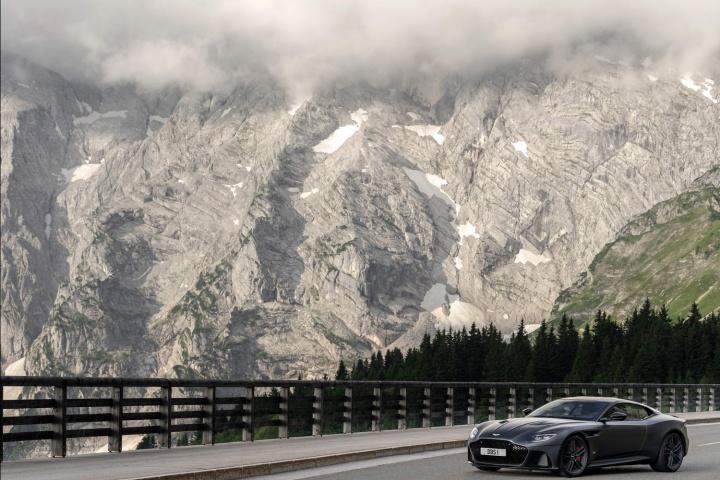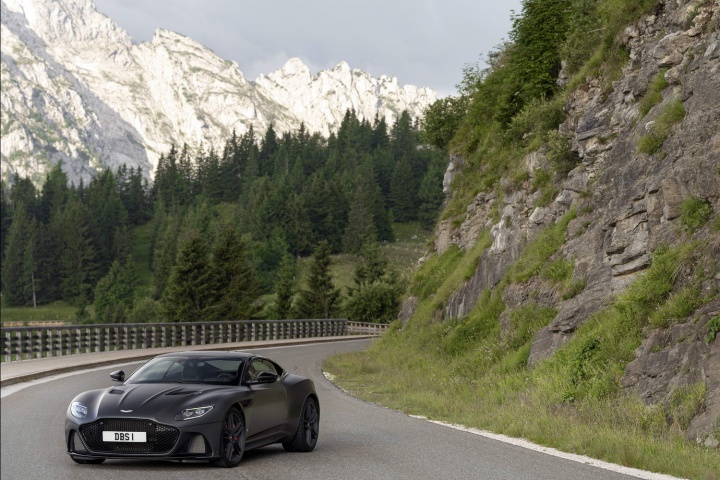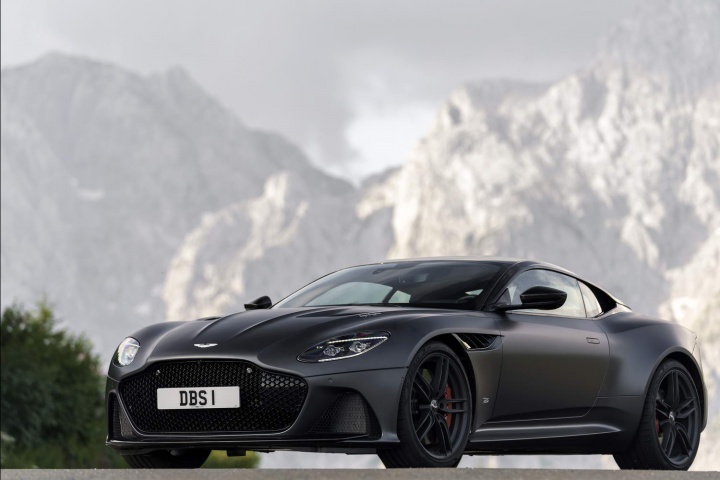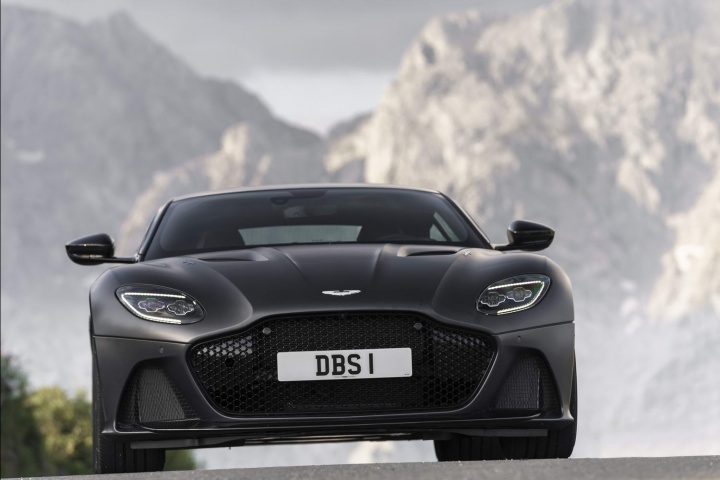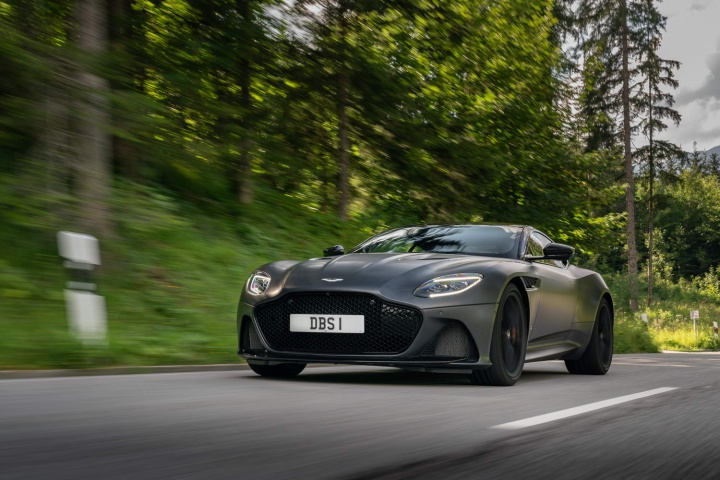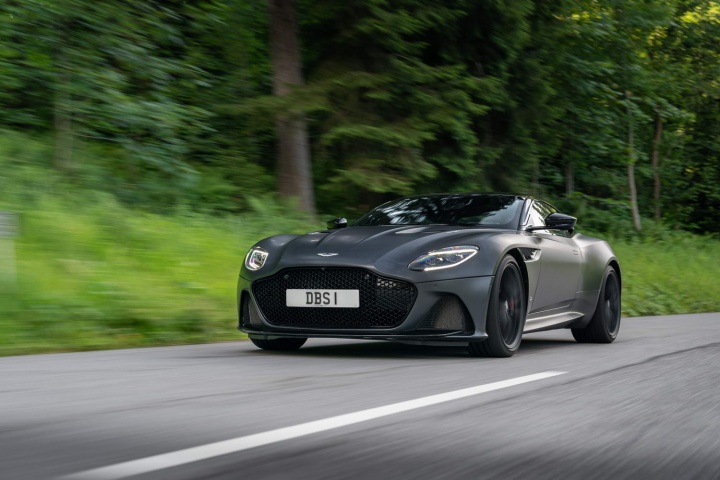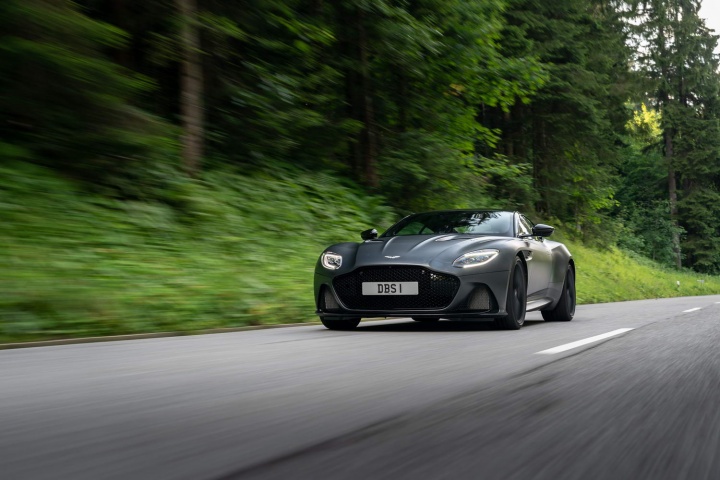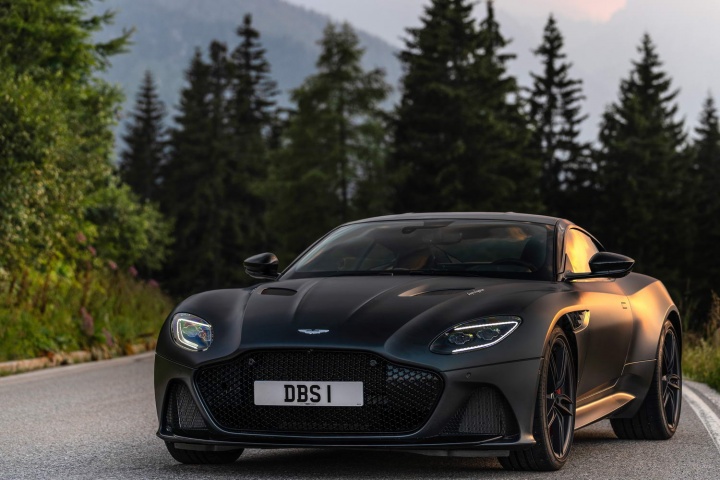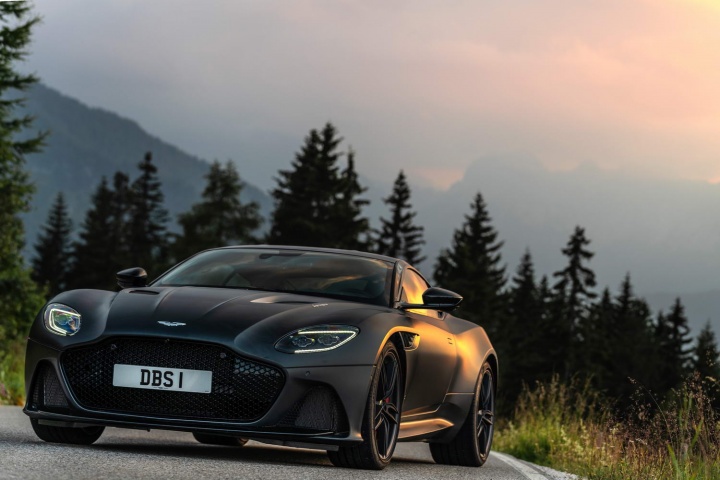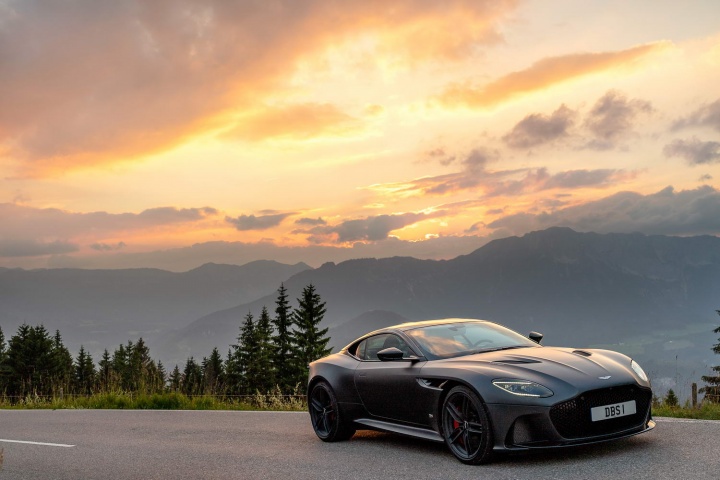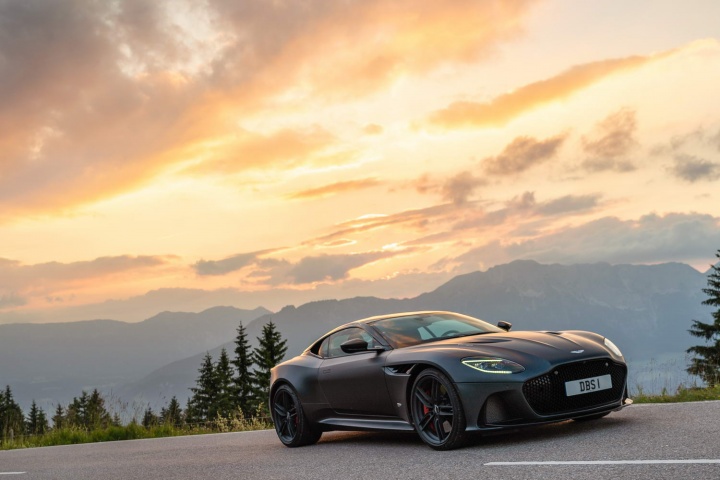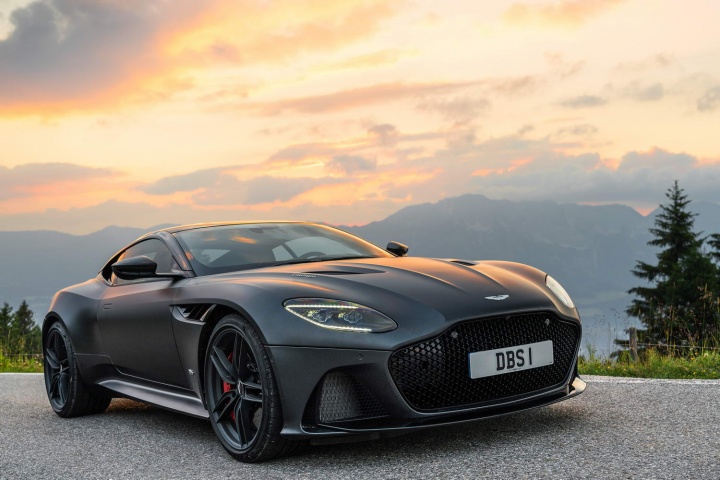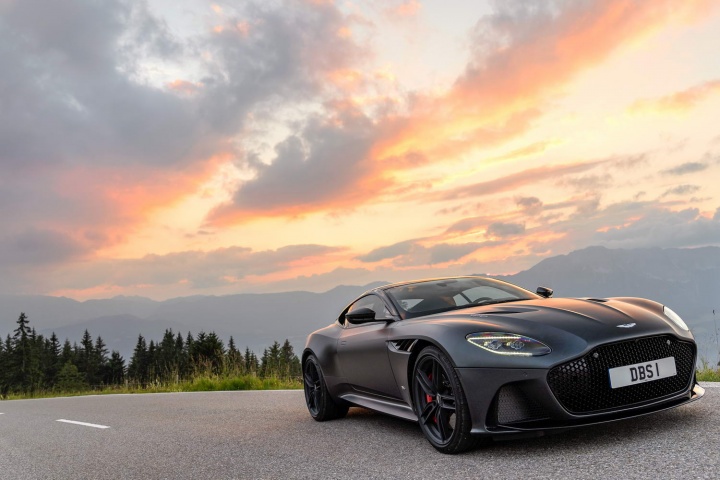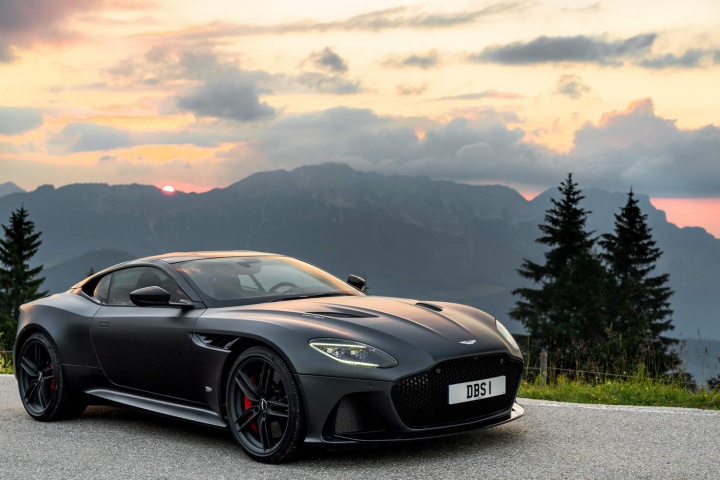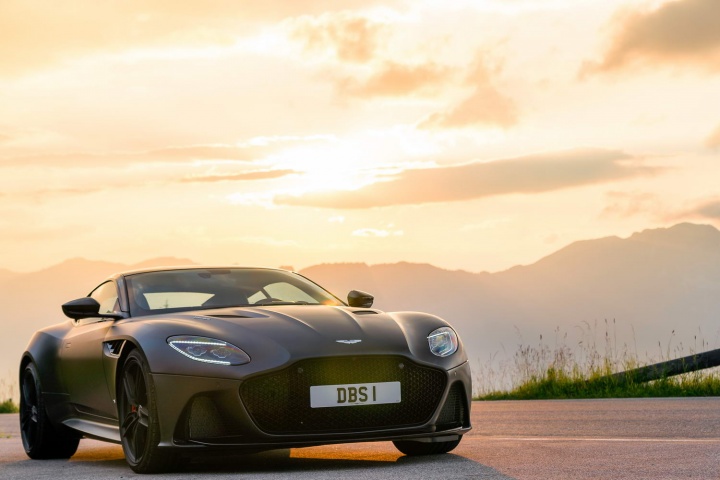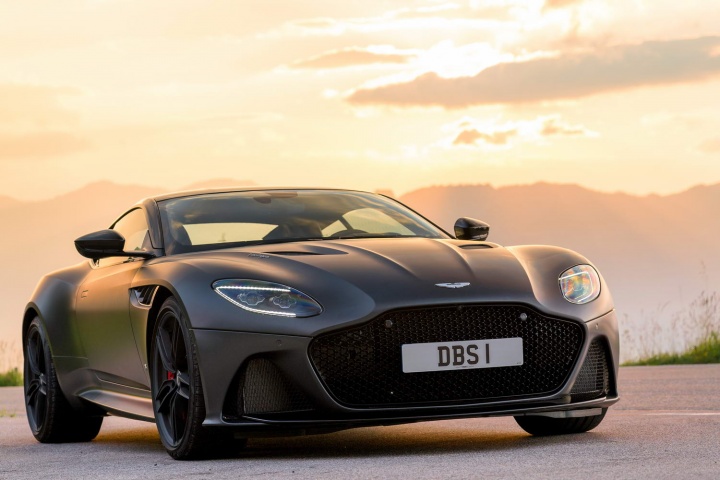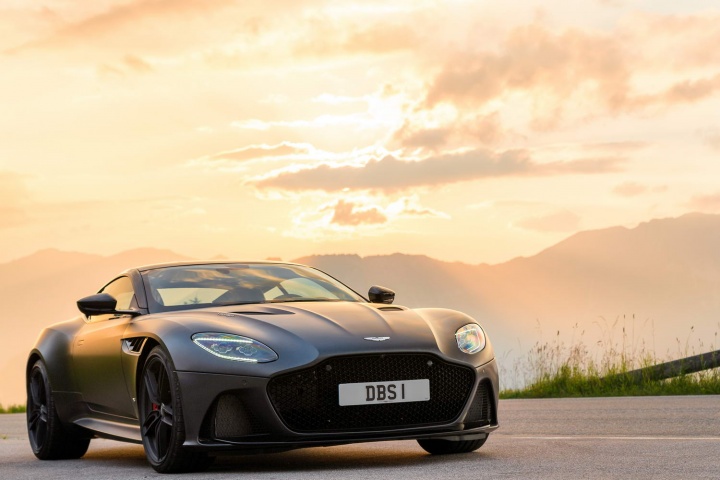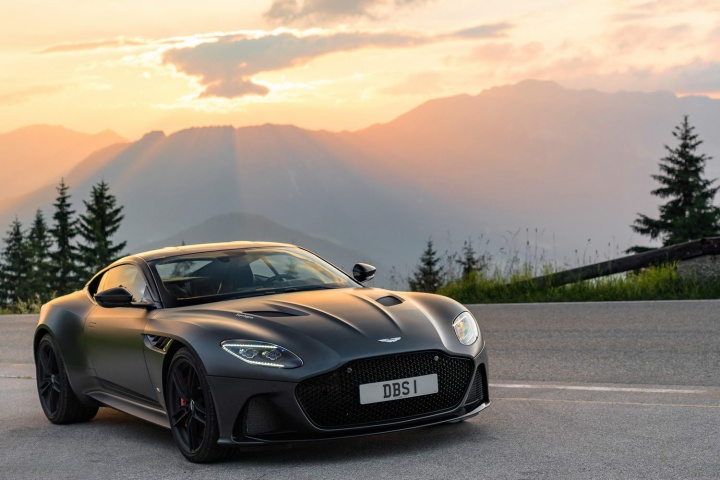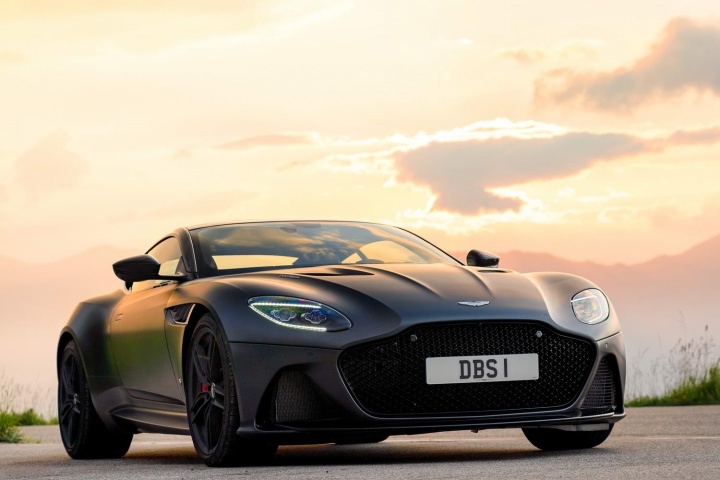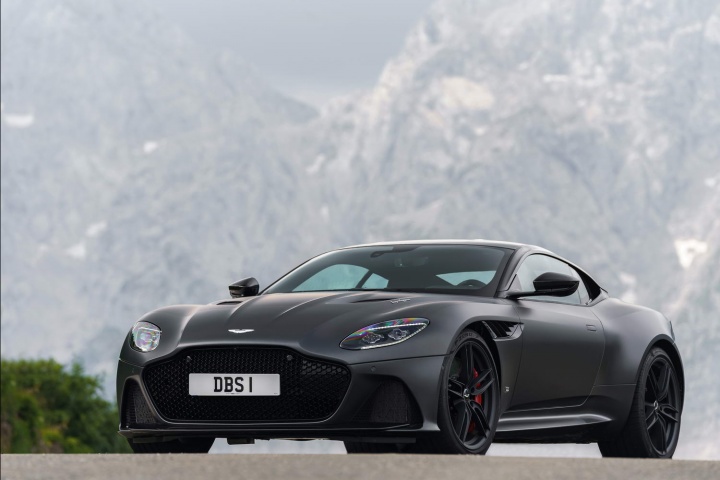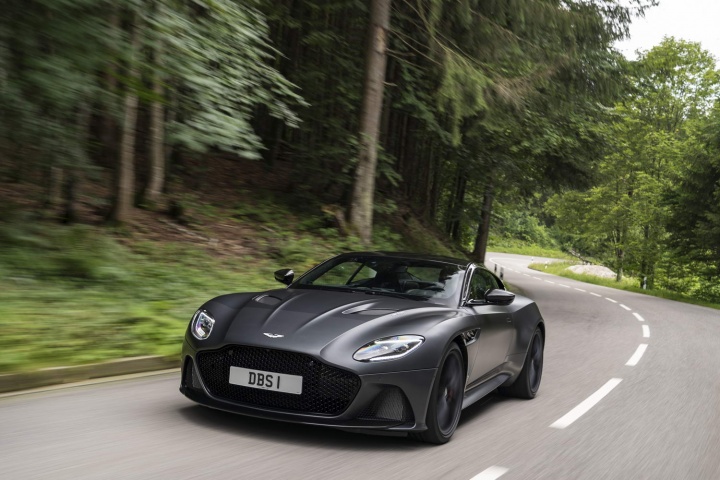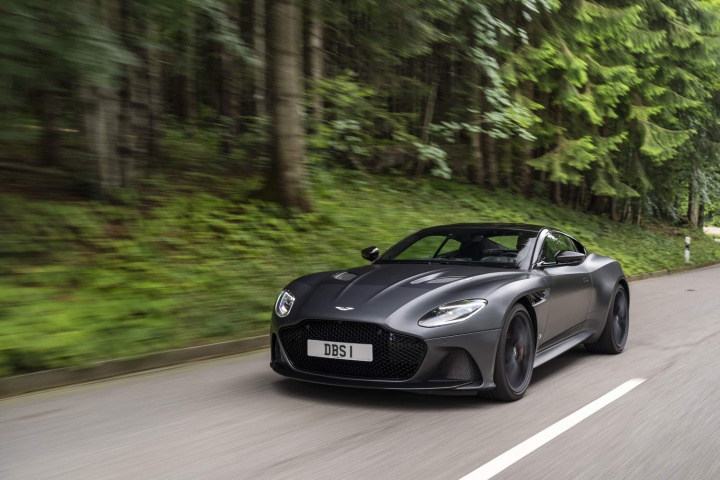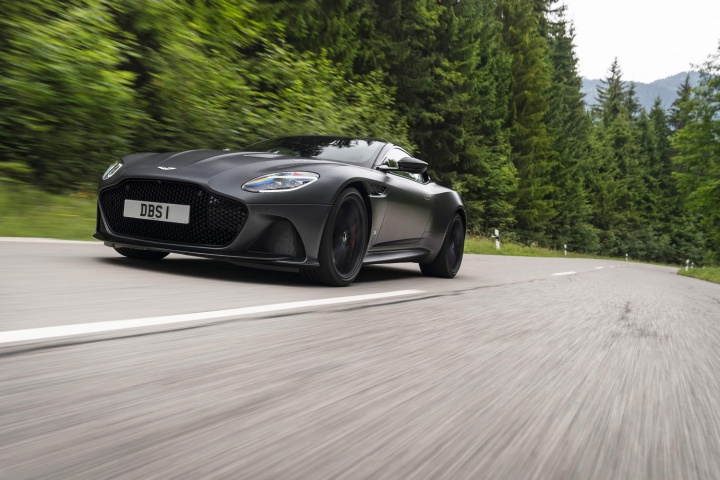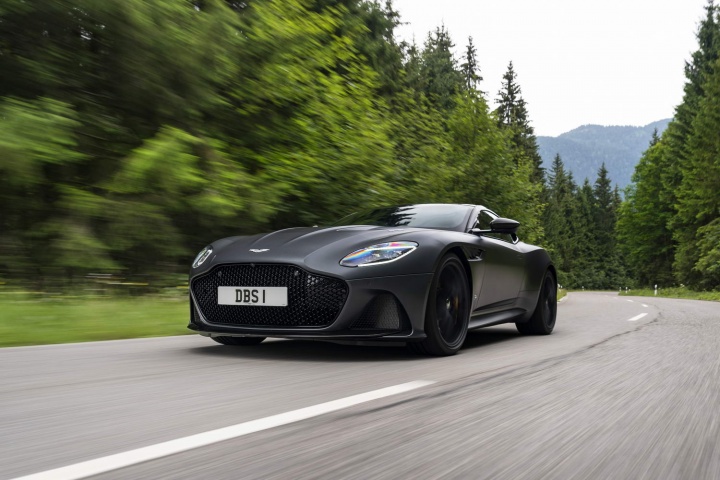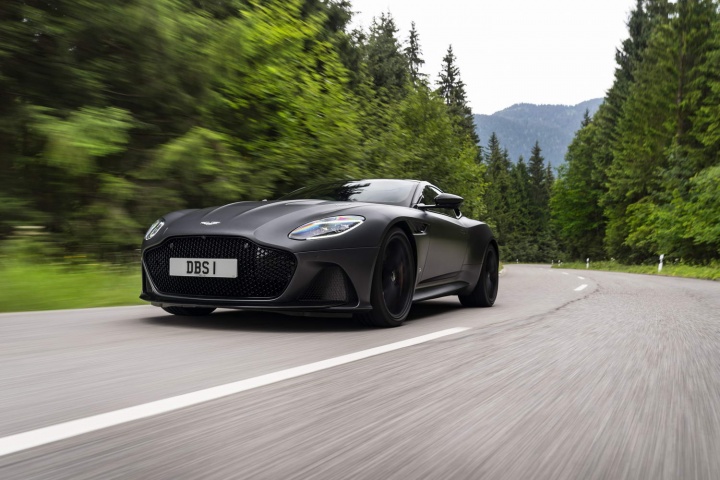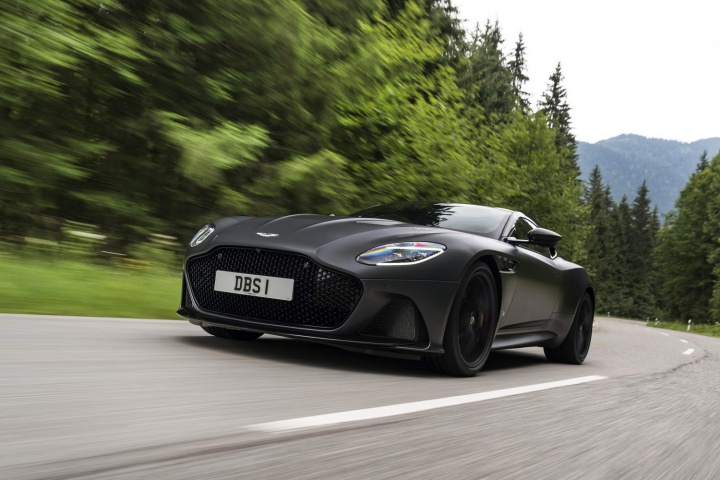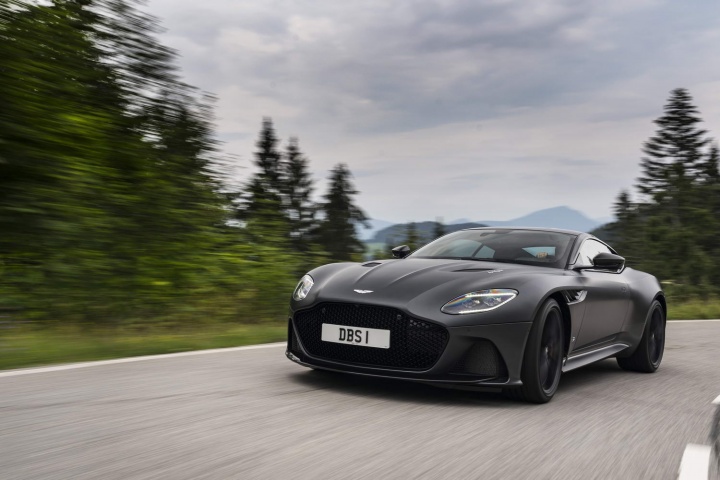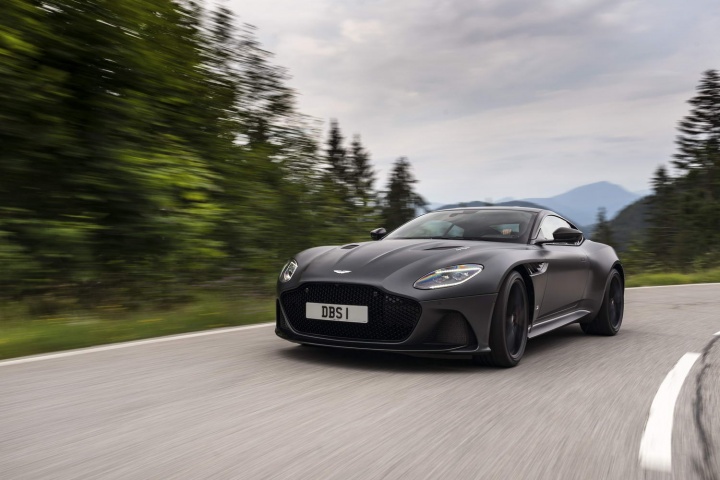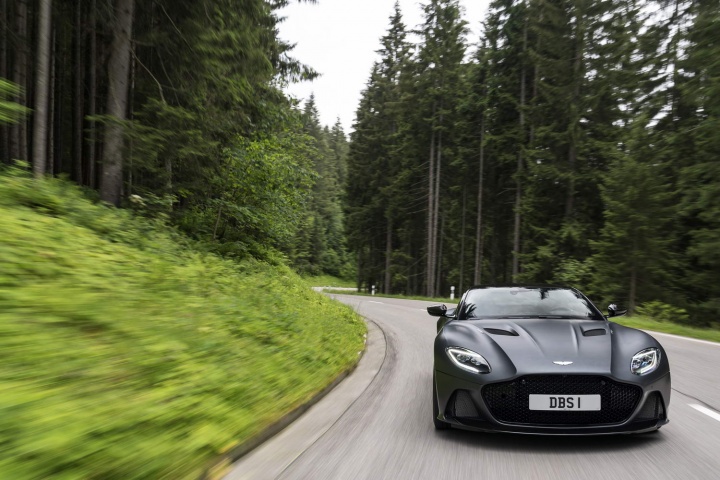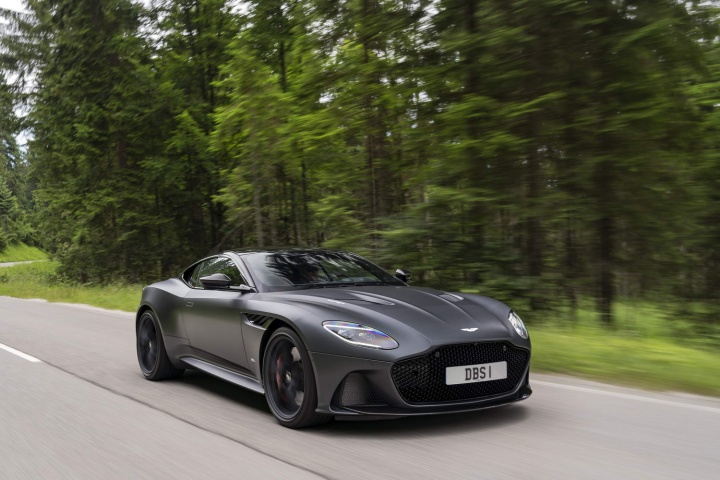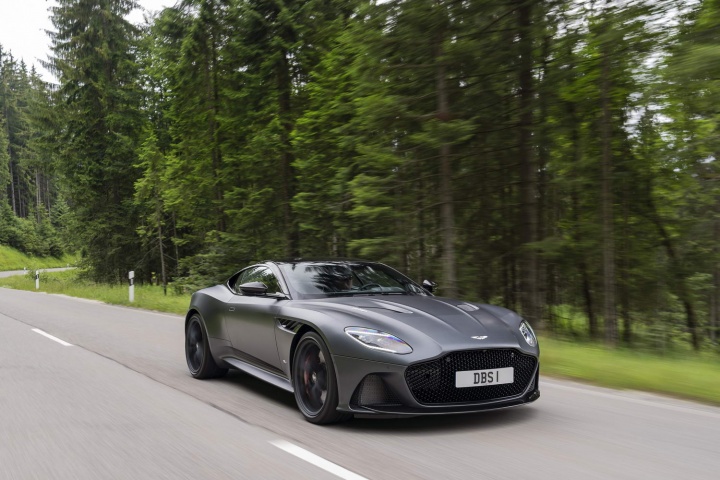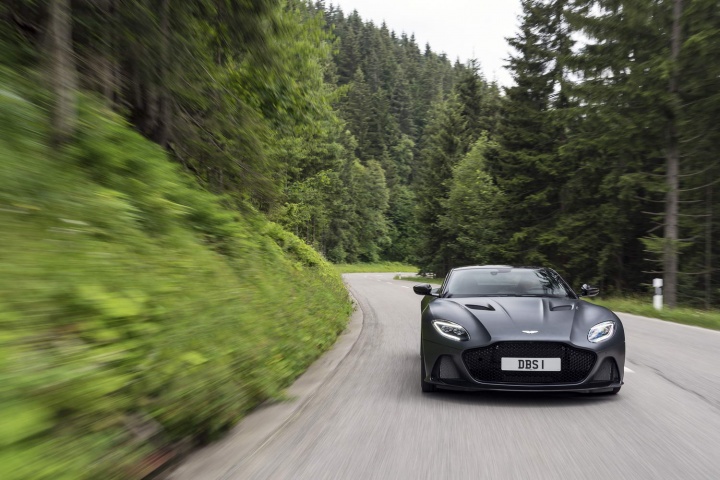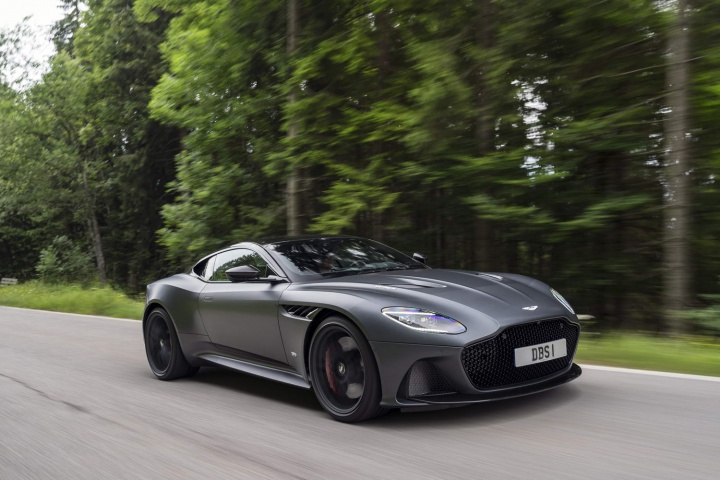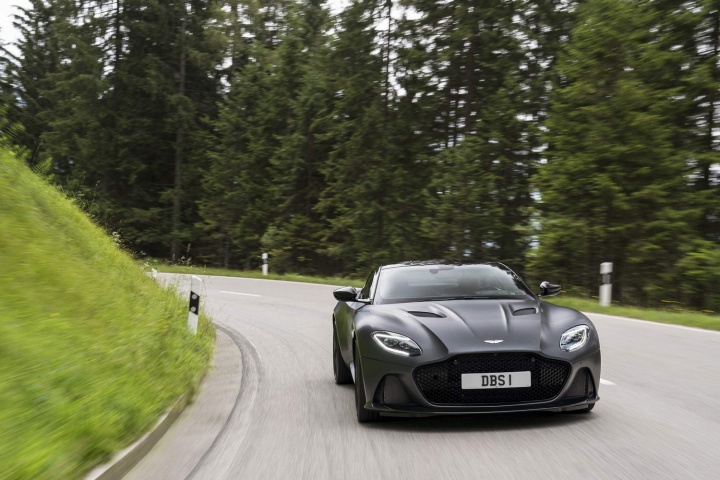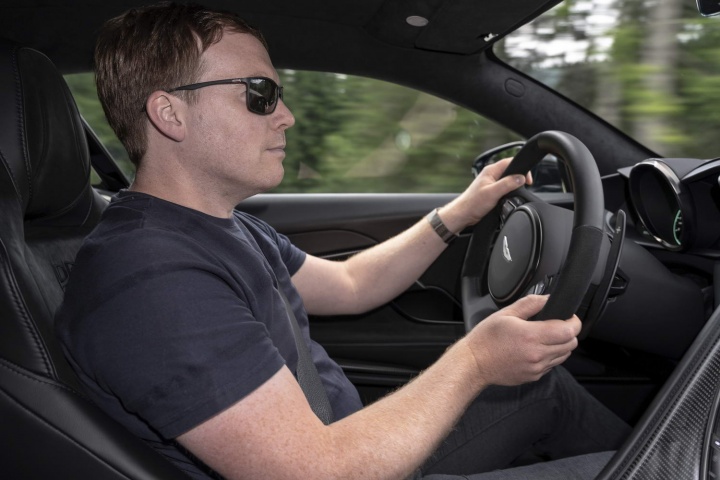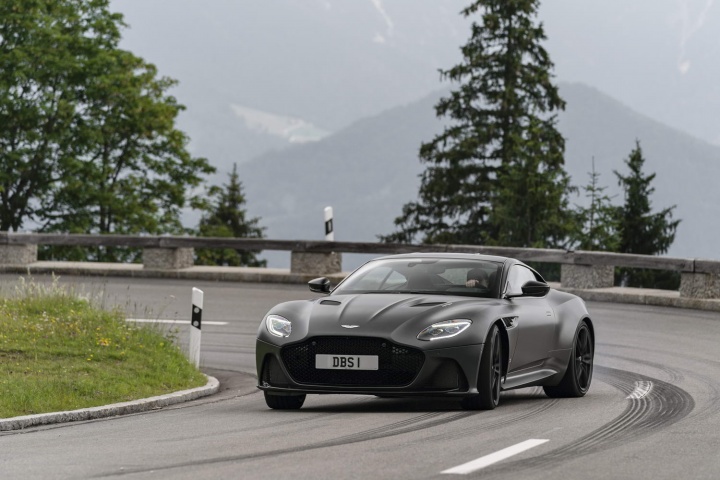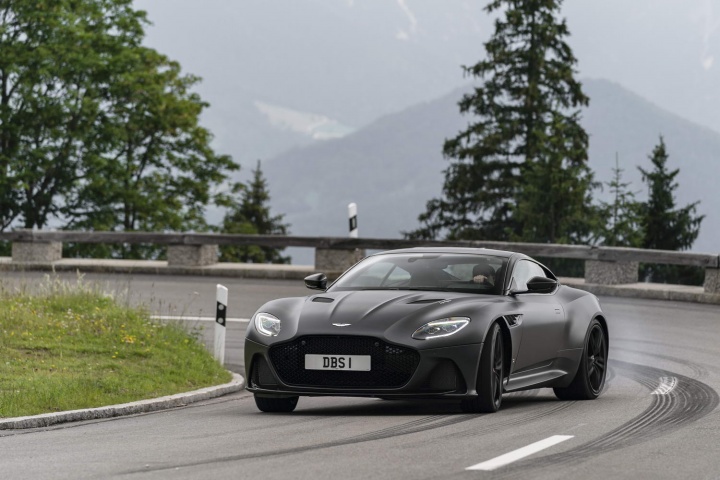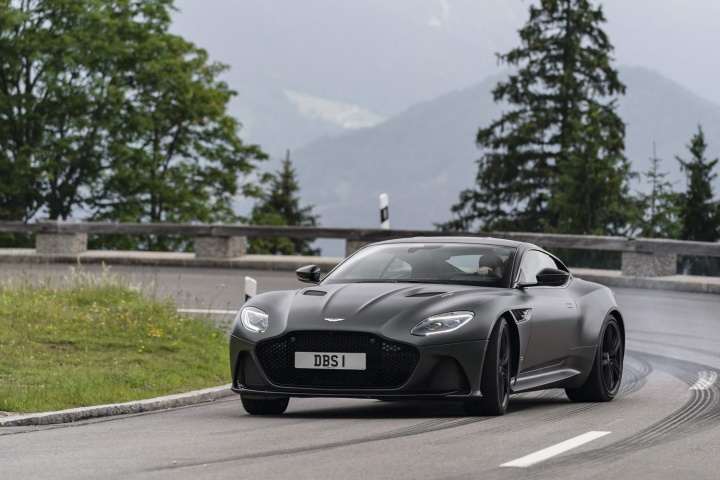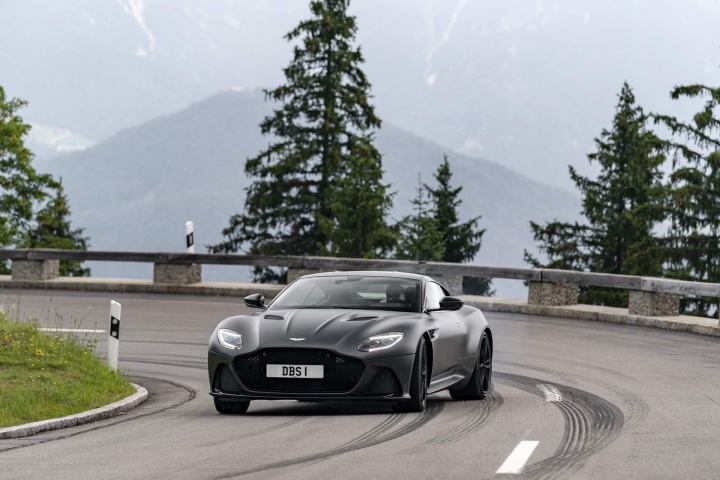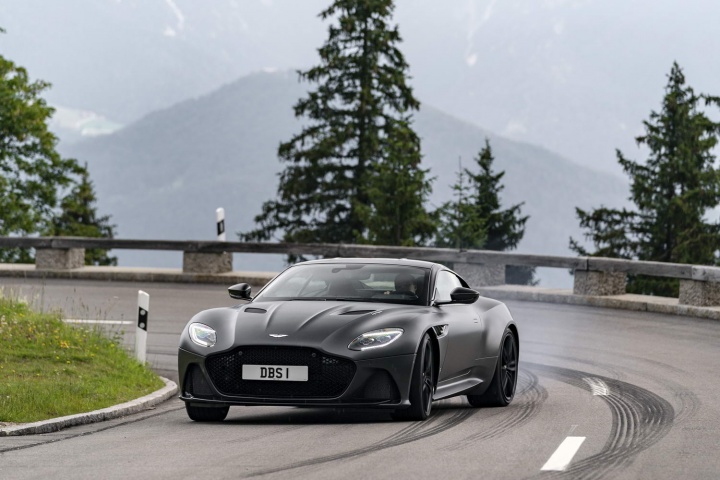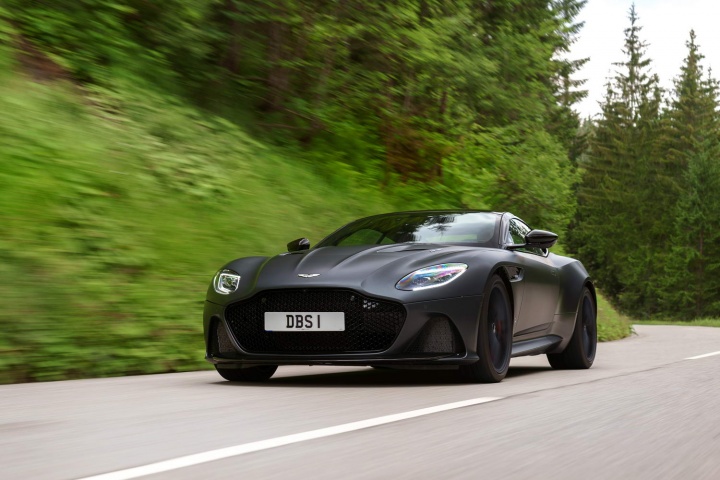Aston Martin revives its DBS name and pairs it with the iconic Superleggera lettering for its brand-new 'Super GT', a car that is designed to be driven fast for long periods of time over long distances. In a selfless sacrifice for our readers, we did just that.
In the metal
You don't need me to tell you how gorgeous the new Aston DBS Superleggera is; just look at it. I'd sum up the appearance as curvaceous muscularity. And while it photographs very well, it looks even better in real life, dripping with aggression and presence, led by a massive honeycomb grille up front. Aston's designers have done a particularly good job of hiding the work of their colleagues in the aerodynamics department, especially when you consider that the DBS Superleggera has the most downforce of any series production Aston Martin to date (180kg in total at top speed). Up front, that's aided by a splitter and airdam, while the side strakes are deeper than they are in the Aston DB11, to reduce pressure in the wheel wells, while that extracted air is managed down the side of the car by the 'open stirrup' and 'curlicues'. A double diffuser can be seen poking out under the new rear bumper, while Aston's 'Aeroblade' design (the air enters ducts either side of the car aft of the side windows and exits on the rear deck, creating 'drag-free' downforce) has been enhanced. At the back, it's also worth lingering over the new LED lights, which are simply stunning, enhancing the wide and low stance of the DBS.
Inside, the DBS looks more like the GT it is purported to be, with tactile materials throughout, a 2+2 seating layout and a very high standard specification. The infotainment, centre console, instruments, etc. are carried over from the Aston DB11, but there's a unique steering wheel (still with the less-than-perfect plastic switches, the only item we have an issue with) with larger gearchange paddles and sportier seats. Saying that, given how much Aston buyers like to personalise their purchases, no two DBS interiors are likely to be the same.
Driving it
It would appear that the DBS Superleggera has but one direct rival in the 'Super GT' segment, the rather formidable Ferrari 812 Superfast. But Aston Martin's engineering team took a rather different approach, focusing on torque output and a less frenetic personality, from the way the car moves with the road, to the steering and, of course, the engine's performance. The DBS uses the same core twin-turbocharged 5.2-litre V12 as the DB11, but with significantly increased output. Where the Aston DB11 AMR makes 639hp and 700Nm of torque, the DBS's engine puts out 725hp and an eye-watering 900Nm. The latter figure, incidentally, is on tap from just 1,800rpm all the way around to 5,000rpm. So, technically speaking, there's little reason to use all eight gears in the rear-mounted transmission in any great hurry, as there's meaningful acceleration available with the merest flex of your right ankle almost regardless of the rpm on the tacho or the ratio selected. The DBS laughs at the notion of 'time exposed to danger' during overtaking, so quickly does it accrue speed when on the move.
But the presence of enlarged gearchange paddles suggests that Aston Martin doesn't expect DBS owners to solely rely on the fully automatic mode of the gearbox and the engine's wall of torque. There's nothing wrong with the transmission, I might add, but to allow it select higher gears all the time would be to deny yourself the aural pleasure of hearing the V12 at full flight. Aston's engineers have given the DBS a new variable quad-pipe exhaust system that sounds purposeful at low speeds and downright giggle-inducing in its intensity, volume and even musicality when you get to explore the upper reaches of the rev counter. It's rather special. And yet, get onto the motorway, toggle back the driving modes to GT, and the volume reduces, allowing you travel longer distances without resulting in going partially deaf.
With all that torque going through the rear wheels, the DBS could have been a bit of a handful, but it's nothing of the sort, certainly not in the dry. The three-setting stability control (on, off and 'Track' in the middle) works unobtrusively when it's needed and never does the car feel held back. Later in our day at the wheel, the heavens opened, which revealed that traction from rest can be challenging if you're ham-fisted with your throttle inputs, but once on the move there's no major issue. Unsurprisingly, it is possible to slide the rear of the DBS out of tighter corners if conditions allow, but you need to provoke it to do so, as the mechanical limited slip differential is designed to help traction out of the corners rather than lose it and it feels far more natural to drive the DBS smoothly and instead revel in its balance, high levels of grip and rock-solid body control. Indeed, the adaptive damping has three modes and while it never feels teeth-chattering firm, it's always perfectly controlled.
Massive carbon ceramic brakes are standard and once warm they are completely unflappable. There's considerably less movement of the brake pedal for a given braking force than in the DB11, too, enhancing the sporting feel, though, crawling through slow traffic, it can be tricky to brake completely smoothly. An excuse if ever I heard one to stay away from traffic jams in your DBS...
What you get for your money
Look, the DBS Superleggera would cost north of €400,000 imported into Ireland (based at the time of writing on a £225,000 UK price), so it's not a car that's being considered in traditional value-for-money terms. It's less expensive than the Ferrari 812 Superfast, but only by tens of thousands, which buyers will spend on options and personalisation in any case. Likewise, it's 'only' tens of thousands more expensive than the Aston DB11 AMR and it's quite a bit more special.
Summary
We now understand why Aston Martin has classed the DBS Superleggera as a Super GT; it's far more focused on driving than it is cruising, and it has simply epic performance on tap, with numbers you'd usually associate with a supercar. Despite that, it also plays the GT role well, allowing its owners the chance to drive it for days at a time without suffering aches and pains. One thing's for sure: they won't want to get out of the driver's seat.

